Microarchitecture: Pipeline of Intel Core CPUs
skyLake in wikichip
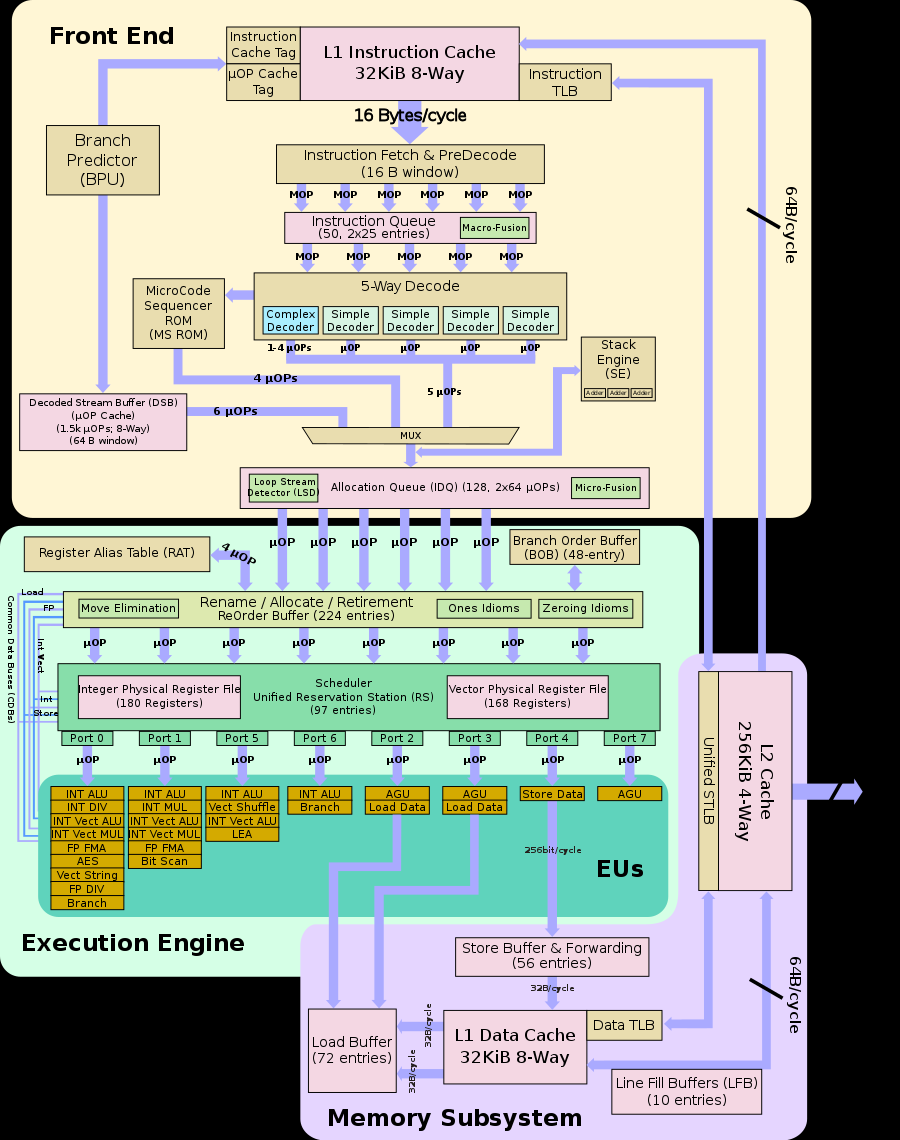
简化图 in uiCA
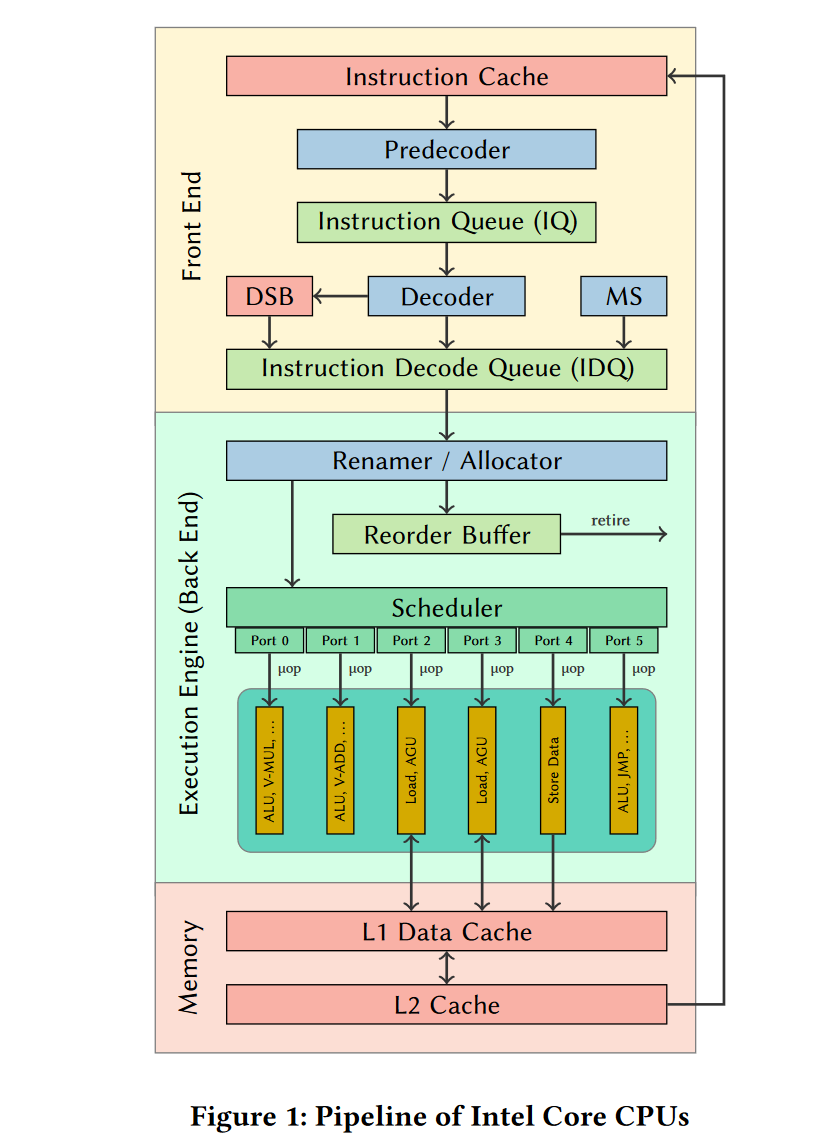
名称解释
- Scheduler
- address-generation unit (AGU),
多端口发射模型
每个端口的函数可能一个周期执行不完。但是是形成了流水线的。可以保证每个周期accept一个新uops
需要进一步的研究学习
暂无
遇到的问题
暂无
开题缘由、总结、反思、吐槽~~
参考文献
无


每个端口的函数可能一个周期执行不完。但是是形成了流水线的。可以保证每个周期accept一个新uops
暂无
暂无
无
寄存器重命名是乱序执行Tomasulo算法的一部分
寄存器重命名可以实现: 1. 部分mov消除 2. NOPs 3. zero (one) idioms 对于这些指令,无序发射到scheduler。可以直接在reorder buffer写入结果。
Zero (one) idioms 是不管原寄存器src值是什么,结果/目的寄存器dst一直/一定是0 (1)的一类指令。比如:XOR一个寄存器和自己。
所以各部分平均执行次数为
| 指令个数 | UOPS_ISSUED | UOPS_EXECUTED | UOPS_RETIRED |
|---|---|---|---|
| 3 | 2 | 1 | 2 |
有些架构可能不支持srcImm0-dstReg的指令的Zero idioms
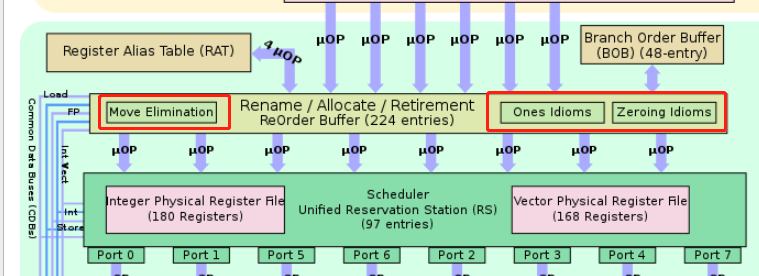 1. 由于是在寄存器重命名阶段(Rename)时实现的
1. 所以不需要发射到port执行单元执行,占用硬件资源。也没有延迟
2. 但是需要划分前面部分的decode的带宽,和ROB(reorder buffer)的资源
1. 由于是在寄存器重命名阶段(Rename)时实现的
1. 所以不需要发射到port执行单元执行,占用硬件资源。也没有延迟
2. 但是需要划分前面部分的decode的带宽,和ROB(reorder buffer)的资源
所以各部分平均执行次数为
| 指令个数 | UOPS_ISSUED | UOPS_EXECUTED | UOPS_RETIRED |
|---|---|---|---|
| 5 | 4 | 3 | 4 |
一般和0的立即数作用有关
第二条指令在IvyBridge也不会消除。这同样是编译器的工作但是llvm-mca通过ZeroRegister的实现,可以消除。
类似的还有
一般也不会消除。这同样是编译器的工作暂无
暂无
https://randomascii.wordpress.com/2012/12/29/the-surprising-subtleties-of-zeroing-a-register/
https://easyperf.net/blog/2018/04/22/What-optimizations-you-can-expect-from-CPU
https://zh.m.wikipedia.org/zh-hans/%E5%AF%84%E5%AD%98%E5%99%A8%E9%87%8D%E5%91%BD%E5%90%8D
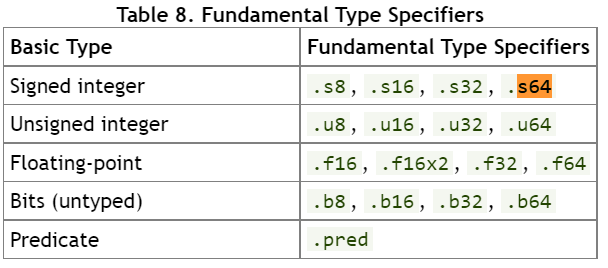
对于Ampere架构
指令方向
各种寄存器说明
* RX for registers
* URX for uniform registers
* SRX for special system-controlled registers
* PX for predicate registers
* c[X][Y] for constant memory
SASS的难点在于指令的后缀。由于手册确实,需要结合PTX的后缀查看
/*0028*/ IMAD R6.CC, R3, R5, c[0x0][0x20];
/*0030*/ IMAD.HI.X R7, R3, R5, c[0x0][0x24];
/*0040*/ LD.E R2, [R6]; //load
c[BANK][ADDR] is a constant memory。
.CC means “set the flags”
R6 = R3*R5 + c[0x0][0x20], saving carry to CC
R7 = (R3*R5 + c[0x0][0x24])>>32 + CC
R2 = *(R7<<32 + R6)
first two commands multiply two 32-bit values (R3 and R5) and add 64-bit value c[0x0][0x24]<<32+c[0x0][0x20],
leaving 64-bit address result in the R6,R7 pair
对应的代码是
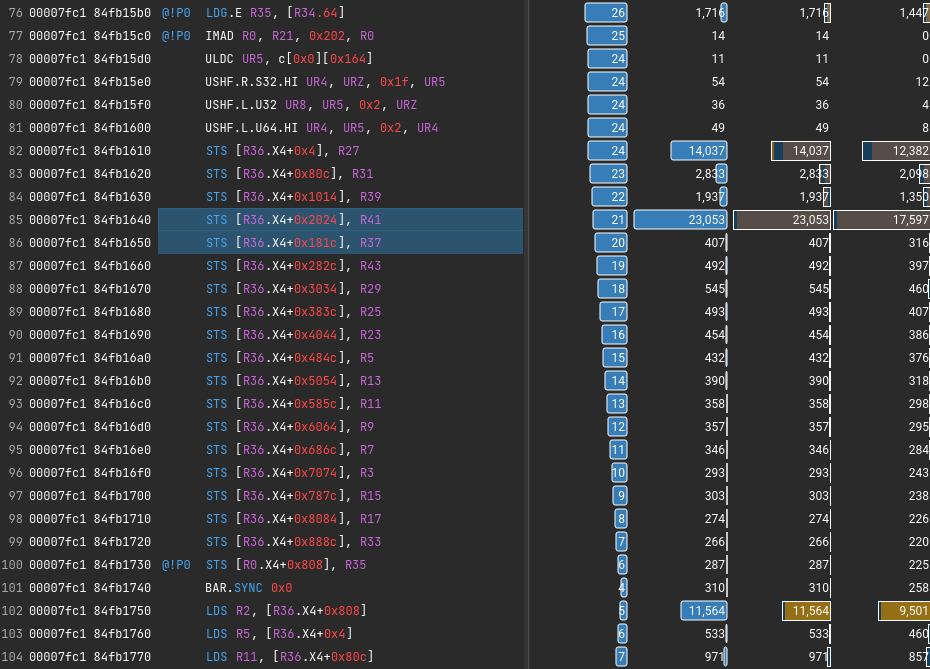
观察 偏移 * 4 * 2060(delta=2056) * 4116(delta=2056) * 8228(delta=2 * 2056) * 6172(delta=-1 * 2056) * 10284(delta=2 * 2056) * 12340(delta=2056)
可见汇编就是中间写反了,导致不连续,不然能隐藏更多延迟
那么这些寄存器是怎么来的呢?感觉就是写反了
IMAD.WIDE.U32 R16, R16, R19, c[0x0][0x168]
LDG.E R27, [R16.64]
IMAD.WIDE R30, R19, c[0x0][0x164], R16
LDG.E R31, [R30.64]
IMAD.WIDE R32, R19, c[0x0][0x164], R30
LDG.E R39, [R32.64]
# important R41 R37
IMAD.WIDE R34, R19, c[0x0][0x164], R32
IMAD.WIDE R40, R19, c[0x0][0x164], R34
LDG.E R41, [R40.64]
LDG.E R37, [R34.64]
原因是前面是手动展开的,假如等待编译器自动展开for循环就不会有这个问题

暂无
暂无
https://forums.developer.nvidia.com/t/solved-sass-code-analysis/41167/2
https://stackoverflow.com/questions/35055014/how-to-understand-the-result-of-sass-analysis-in-cuda-gpu
超微半导体公司(英語:Advanced Micro Devices, Inc.;縮寫:AMD、超微,或譯「超威」),創立於1969年,是一家專注於微处理器及相關技術設計的跨国公司,总部位于美國加州舊金山灣區矽谷內的森尼韦尔市。
 由 AMD 于 2019 年年中设计和推出。 是基于 Zen 2 微架构的多芯片处理器
由 AMD 于 2019 年年中设计和推出。 是基于 Zen 2 微架构的多芯片处理器
> cat lscpu.txt
Architecture: x86_64
CPU op-mode(s): 32-bit, 64-bit
Byte Order: Little Endian
CPU(s): 64
On-line CPU(s) list: 0-63
Thread(s) per core: 1
Core(s) per socket: 32
Socket(s): 2
NUMA node(s): 2
Vendor ID: AuthenticAMD
CPU family: 23
Model: 49
Model name: AMD EPYC 7452 32-Core Processor
Stepping: 0
CPU MHz: 2345.724
BogoMIPS: 4691.44
Virtualization: AMD-V
L1d cache: 32K
L1i cache: 32K
L2 cache: 512K
L3 cache: 16384K
NUMA node0 CPU(s): 0-31
NUMA node1 CPU(s): 32-63
Flags:
(Intel) fpu vme de pse tsc msr pae mce cx8 apic sep mtrr pge mca cmov pat pse36 clflush mmx fxsr sse sse2 ht
(AMD) syscall nx mmxext fxsr_opt pdpe1gb rdtscp lm
constant_tsc art rep_good nopl nonstop_tsc extd_apicid aperfmperf eagerfpu
(intel) pni pclmulqdq monitor ssse3 fma cx16 sse4_1 sse4_2 x2apic movbe popcnt aes xsave avx f16c rdrand
(AMD) lahf_lm cmp_legacy svm extapic cr8_legacy abm sse4a misalignsse 3dnowprefetch osvw ibs skinit wdt tce topoext perfctr_core perfctr_nb bpext perfctr_l2
cpb cat_l3 cdp_l3 hw_pstate sme retpoline_amd
ssbd ibrs ibpb stibp
vmmcall
(intel) fsgsbase bmi1 avx2 smep bmi2 cqm rdt_a rdseed adx smap clflushopt clwb sha_ni
xsaveopt xsavec xgetbv1
(intel) cqm_llc cqm_occup_llc cqm_mbm_total cqm_mbm_local
(AMD) clzero irperf xsaveerptr
arat
(AMD) npt lbrv svm_lock nrip_save tsc_scale vmcb_clean flushbyasid decodeassists pausefilter pfthreshold avic v_vmsave_vmload vgif
(intel) umip
(AMD) overflow_recov succor smca
fpu:板载 FPU(浮点支持)
vme:虚拟 8086 模式增强功能
de: 调试扩展 (CR4.DE)
pse:页表大小扩展(4MB 内存页表)
tsc:时间戳计数器(RDTSC)
msr:特定模型的寄存器(RDMSR、WRMSR)
pae:物理地址扩展(支持超过 4GB 的 RAM)
mce:机器检查异常
cx8:CMPXCHG8 指令(64 位比较和交换)
apic:板载 APIC(Advanced Programmable Interrupt Controller)
sep:SYS ENTER/SYS EXIT
mtrr:内存类型范围寄存器
pge:页表全局启用(PDE 和 PTE 中的全局位)
mca:机器检查架构
cmov:CMOV 指令(条件移动)(也称为 FCMOV)
pat:页表属性表
pse36:36 位 PSE(大页表)
pn:处理器序列号
clflush:缓存行刷新指令
mmx:多媒体扩展
fxsr: FXSAVE/FXRSTOR, CR4.OSFXSR # enables Streaming SIMD Extensions (SSE) instructions and fast FPU save & restore.
sse:英特尔 SSE 矢量指令
sse2:sse2
ht:超线程和/或多核
ss:CPU自监听
tm:自动时钟控制(Thermal Monitor)
ia64:英特尔安腾架构 64 位(不要与英特尔的 64 位 x86 架构混淆,标志为 x86-64 或由标志 lm 指示的“AMD64”位)
pbe:Pending Break Enable(PBE# 引脚)唤醒支持
syscall: SYSCALL (Fast System Call) and SYSRET (Return From Fast System Call)
nx:执行禁用 # NX 位(不执行)是 CPU 中使用的一项技术,用于分隔内存区域,以供处理器指令(代码)存储或数据存储使用
mmxext: AMD MMX extensions
fxsr_opt: FXSAVE/FXRSTOR optimizations
pdpe1gb: One GB pages (allows hugepagesz=1G)
rdtscp: Read Time-Stamp Counter and Processor ID
lm: Long Mode (x86-64: amd64, also known as Intel 64, i.e. 64-bit capable)
mp: Multiprocessing Capable.
3dnowext: AMD 3DNow! extensions
3dnow: 3DNow! (AMD vector instructions, competing with Intel's SSE1)
constant_tsc:TSC(Time Stamp Counter) 以恒定速率滴答
art: Always-Running Timer
rep_good:rep 微码运行良好
nopl: The NOPL (0F 1F) instructions # NOPL is long-sized bytes "do nothing" operation
nonstop_tsc: TSC does not stop in C states
extd_apicid: has extended APICID (8 bits) (Advanced Programmable Interrupt Controller)
aperfmperf: APERFMPERF # On x86 hardware, APERF and MPERF are MSR registers that can provide feedback on current CPU frequency.
eagerfpu: Non lazy FPU restore
pni: SSE-3 (“2004年,新内核Prescott New Instructions”)
pclmulqdq: 执行四字指令的无进位乘法 - GCM 的加速器)
monitor: Monitor/Mwait support (Intel SSE3 supplements)
ssse3:补充 SSE-3
fma:融合乘加
cx16: CMPXCHG16B # double-width compare-and-swap (DWCAS) implemented by instructions such as x86 CMPXCHG16B
sse4_1:SSE-4.1
sse4_2:SSE-4.2
x2apic: x2APIC
movbe:交换字节指令后移动数据
popcnt:返回设置为1指令的位数的计数(汉明权,即位计数)
aes/aes-ni:高级加密标准(新指令)
xsave:保存处理器扩展状态:还提供 XGETBY、XRSTOR、XSETBY
avx:高级矢量扩展
f16c:16 位 fp 转换 (CVT16)
rdrand:从硬件随机数生成器指令中读取随机数
lahf_lm:在长模式下从标志 (LAHF) 加载 AH 并将 AH 存储到标志 (SAHF)
cmp_legacy:如果是,超线程无效
svm:“安全虚拟机”:AMD-V
extapic:扩展的 APIC 空间
cr8_legacy:32 位模式下的 CR8
abm:高级位操作
sse4a:SSE-4A
misalignsse:指示当一些旧的 SSE 指令对未对齐的数据进行操作时是否产生一般保护异常 (#GP)。还取决于 CR0 和对齐检查位
3dnowprefetch:3DNow预取指令
osvw:表示 OS Visible Workaround,它允许 OS 绕过处理器勘误表。
ibs:基于指令的采样
xop:扩展的 AVX 指令
skinit:SKINIT/STGI 指令 # x86虚拟化的系列指令
wdt:看门狗定时器
tce:翻译缓存扩展
topoext:拓扑扩展 CPUID 叶
perfctr_core:核心性能计数器扩展
perfctr_nb:NB 性能计数器扩展
bpext:数据断点扩展
perfctr_l2:L2 性能计数器扩展
cpb:AMD 核心性能提升
cat_l3:缓存分配技术L3
cdp_l3:代码和数据优先级 L3
hw_pstate:AMD HW-PSstate Hardware P-state
sme:AMD 安全内存加密
retpoline_amd:AMD Retpoline 缓解 # 防止被攻击的安全策略
fsgsbase:{RD/WR}{FS/GS}BASE 指令
bmi1:第一 组位操作扩展
avx2: AVX2 instructions
smep:主管模式执行保护
bmi2:第二 组位操作扩展
cqm:缓存 QoS 监控(Quality of Service )
rdt_a:资源总监技术分配
rdseed:RDSEED 指令,RDRAND 用于仅需要高质量随机数的应用程序
adx:ADCX 和 ADOX 指令
smap:超级用户模式访问保护
clflushopt:CLFLUSHOPT 指令, Optimized CLFLUSH,优化的缓存行刷回, 能够把指定缓存行(Cache Line)从所有级缓存中淘汰,若该缓存行中的数据被修改过,则将该数据写入主存;支持现状:目前主流处理器均支持该指令。
clwb: CLWB instruction (Cache Line Write Back,缓存行写回)作用与 CLFLUSHOPT 相似,但在将缓存行中的数据写回之后,该缓存行仍将呈现为未被修改过的状态;支持现状
sha_ni: SHA1/SHA256 Instruction Extensions
cqm_llc: LLC QoS # last level cache (LLC)
cqm_occup_llc: LLC occupancy monitoring # Memory Bandwidth Monitoring (MBM)
cqm_mbm_total: LLC total MBM monitoring
cqm_mbm_local: LLC local MBM monitoring
clzero:CLZERO 指令,随 Zen 微体系结构引入的 AMD 供应商特定 x86 指令。CLZERO 通过向行中的每个字节写入零来清除由 RAX 寄存器中的逻辑地址指定的缓存行。
irperf:指令退休性能计数器
xsaveerptr:始终保存/恢复 FP 错误指针
npt:AMD 嵌套页表支持
lbrv:AMD LBR 虚拟化支持
svm_lock:AMD SVM 锁定 MSR
nrip_save:AMD SVM next_rip 保存
tsc_scale:AMD TSC 缩放支持
vmcb_clean:AMD VMCB 清洁位支持
flushbyasid:AMD 逐个 ASID 支持
解码辅助:AMD 解码辅助支持
pausefilter: AMD 过滤暂停拦截
pfthreshold:AMD 暂停过滤器阈值
avic:虚拟中断控制器
vmsave_vmload:虚拟 VMSAVE VMLOAD
vgif:虚拟 GIF
ssbd ibrs ibpb stibp
英特尔处理器支持多种技术来优化功耗。 在本文中,我们概述了 p 状态(运行期间电压和 CPU 频率的优化)和 c 状态(如果内核不必执行任何指令,则优化功耗)。
ADCX 将两个无符号整数加上进位,从进位标志中读取进位,并在必要时将其设置在那里。 不影响进位以外的其他标志。 ADOX 将两个无符号整数加上进位,从溢出标志中读取进位,并在必要时将其设置在那里。 不影响溢出以外的其他标志。
暂无
暂无
https://unix.stackexchange.com/questions/43539/what-do-the-flags-in-proc-cpuinfo-mean
GPU Processing Clusters (GPCs),
Texture Processing Clusters (TPCs),
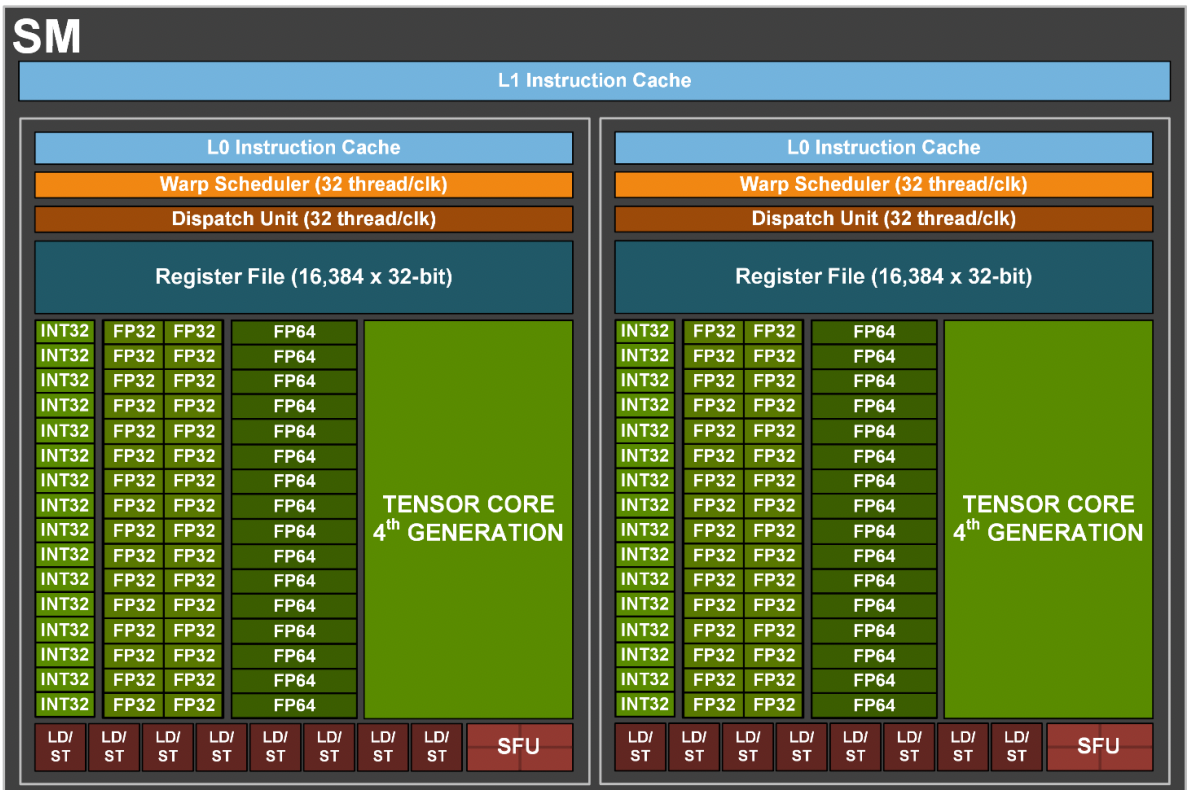
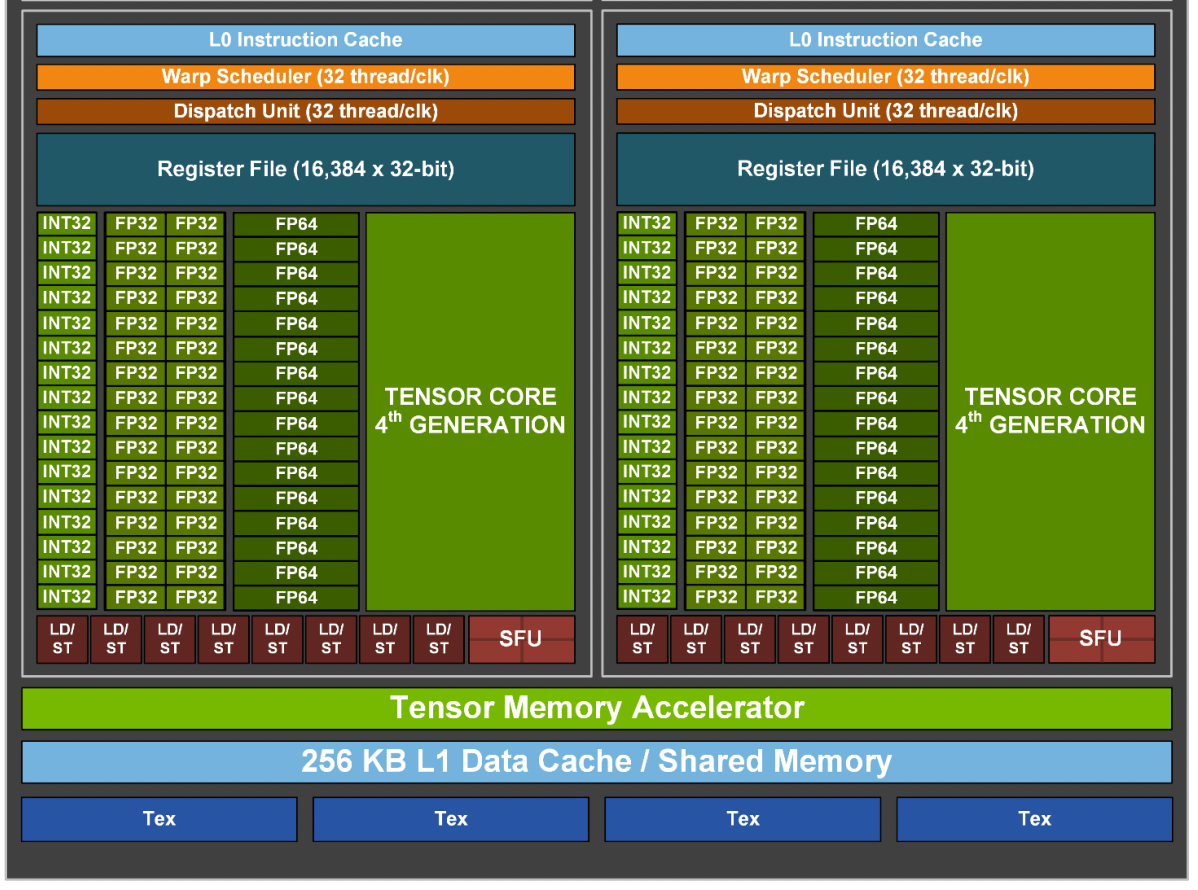
上面两张图组成一个SM,Special Function Units (SFUs)
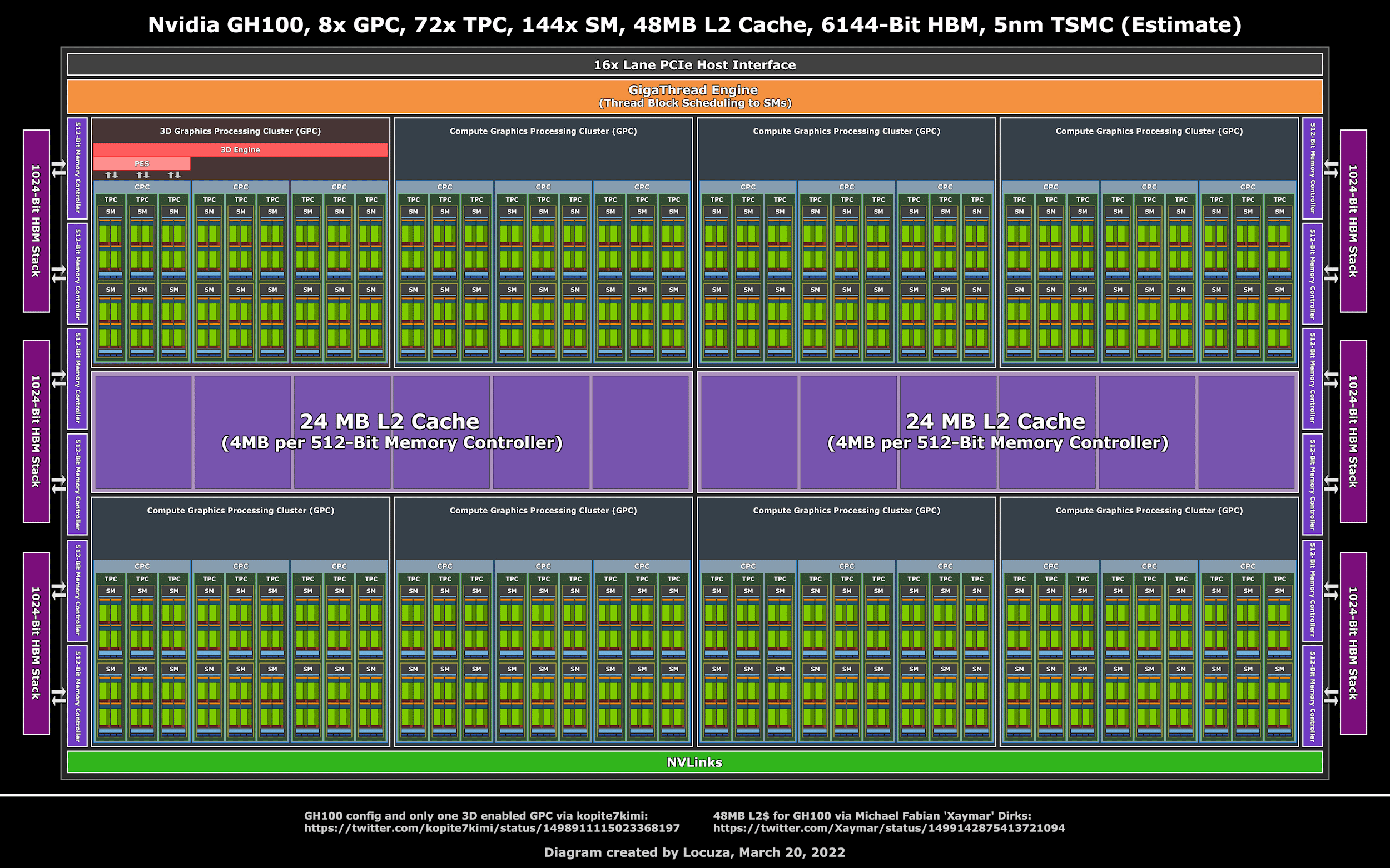
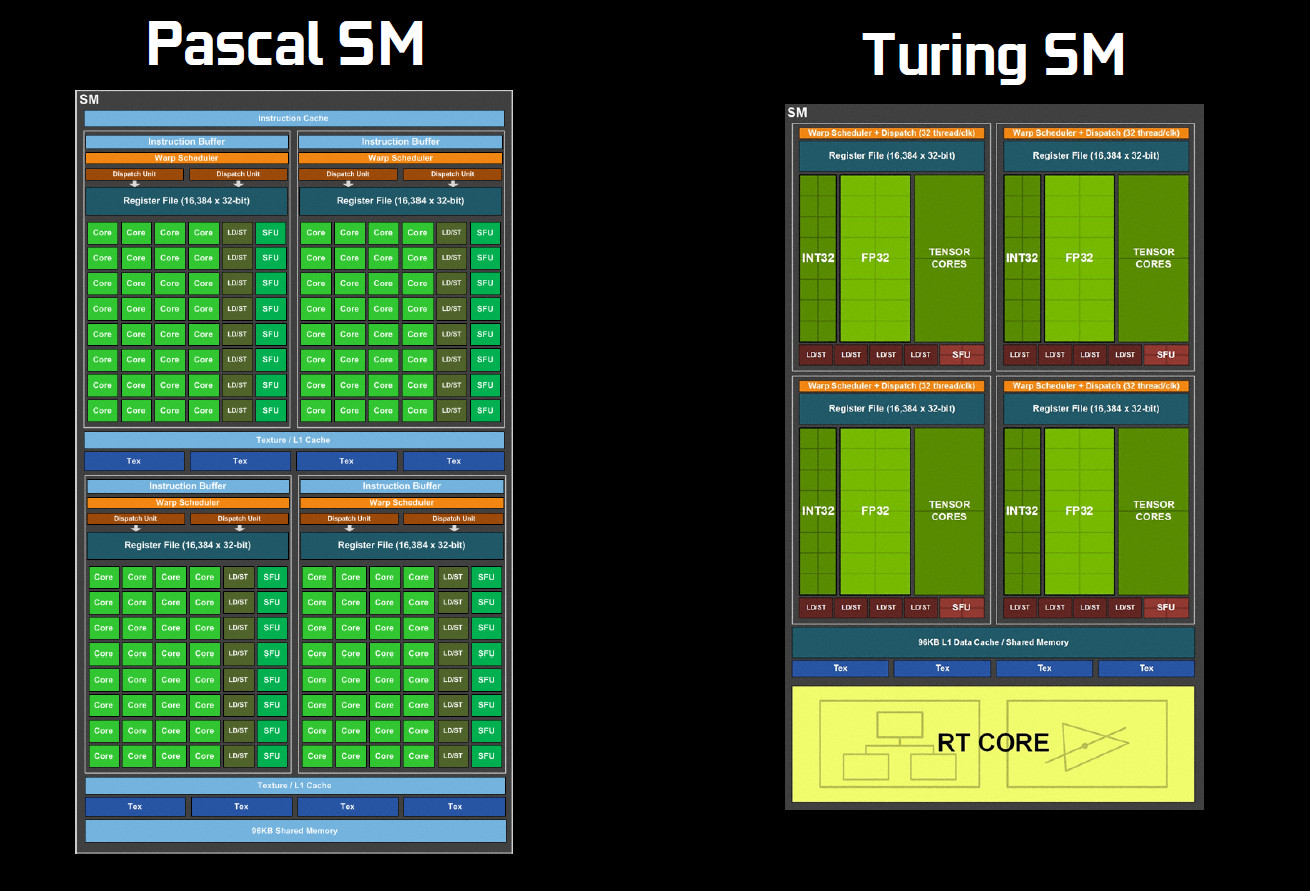
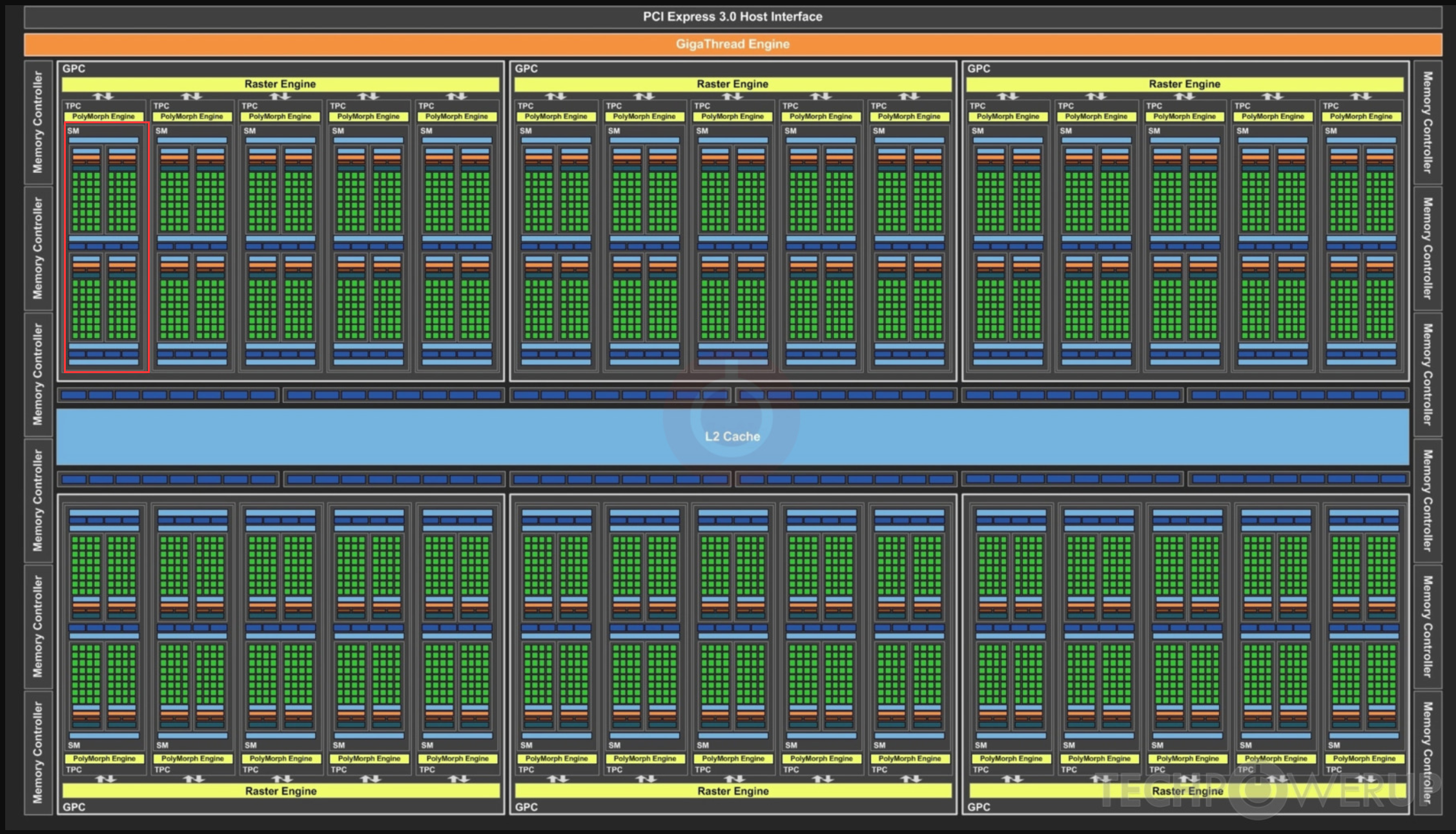 图中红框是一个SM
图中红框是一个SM
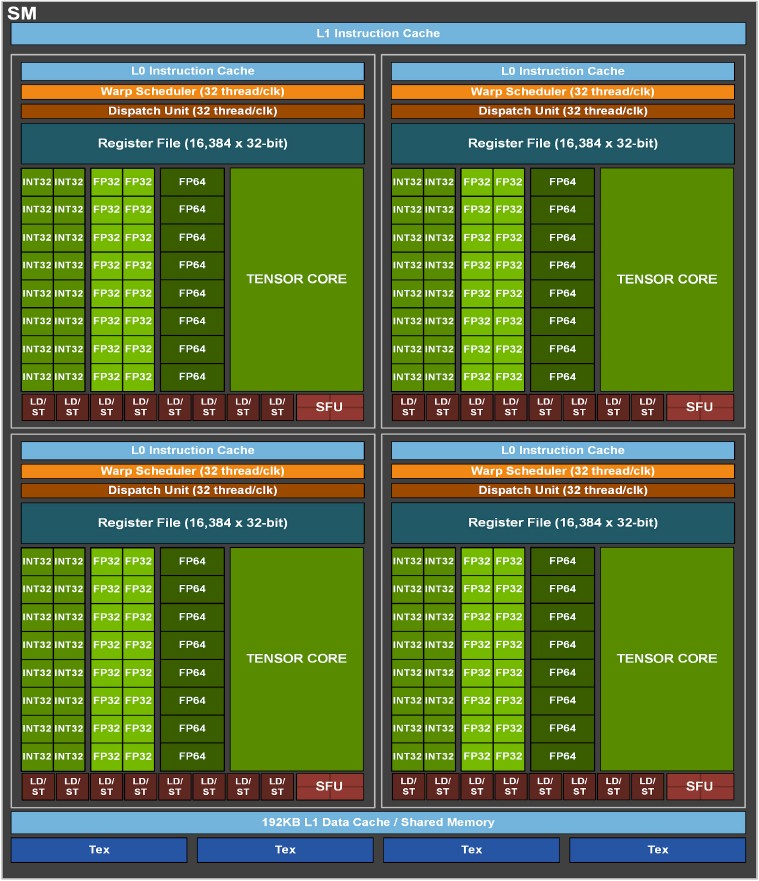
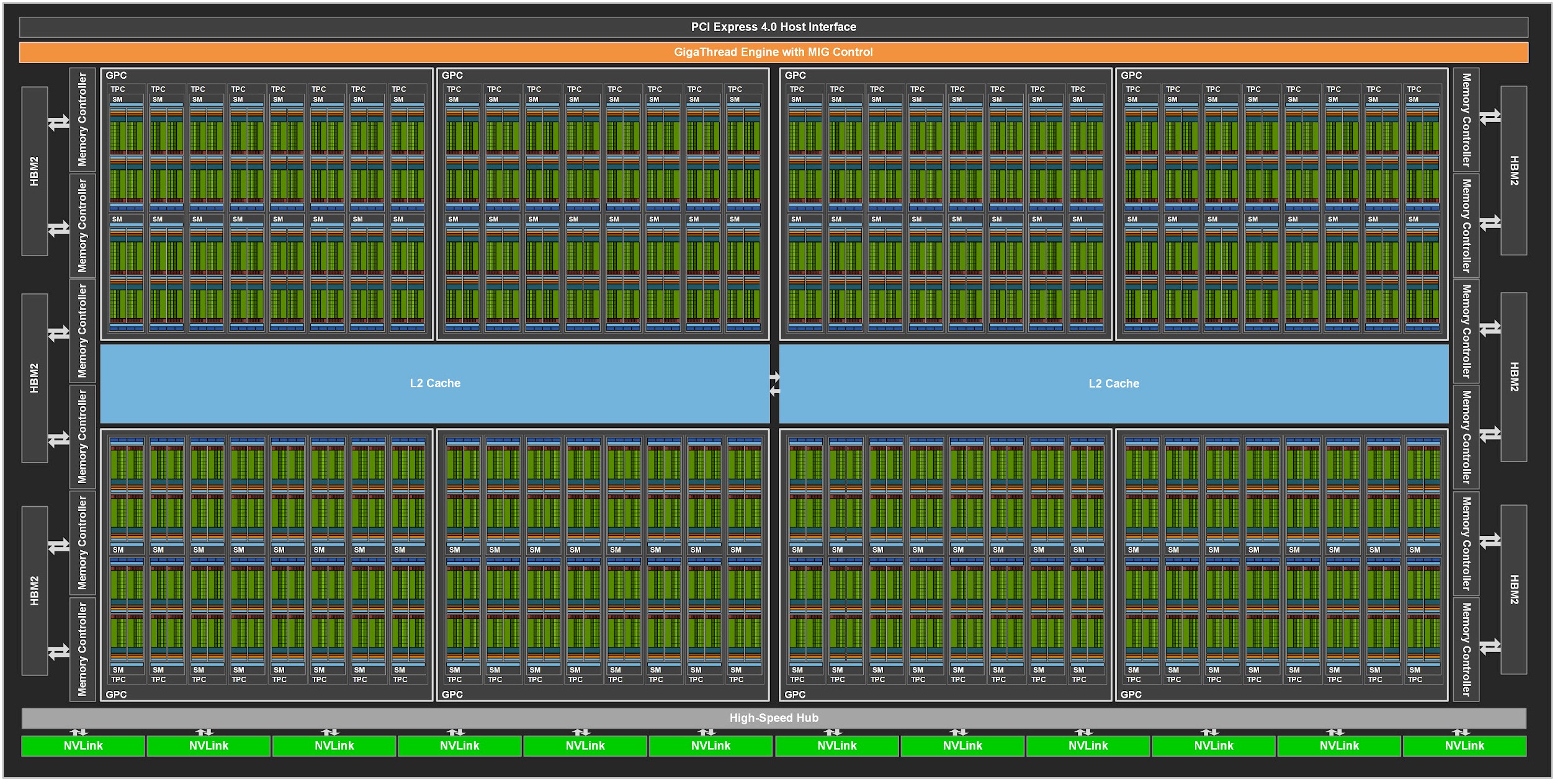
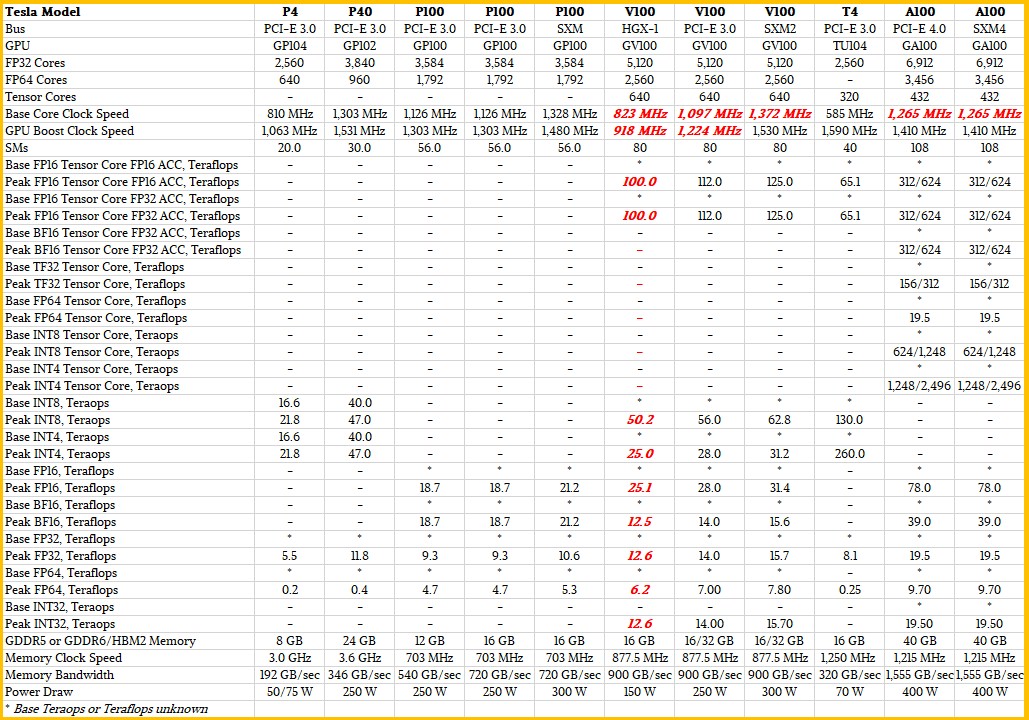
10496个流处理器,核心加速频率1.70GHz,384-bit 24GB GDDR6X显存。
在之前的GA100大核心中,每组SM是64个INT32单元、64个FP32单元及32个FP64单元组成的,但在GA102核心中,FP64单元大幅减少,增加了RT Core,Tensor Core也略微减少。
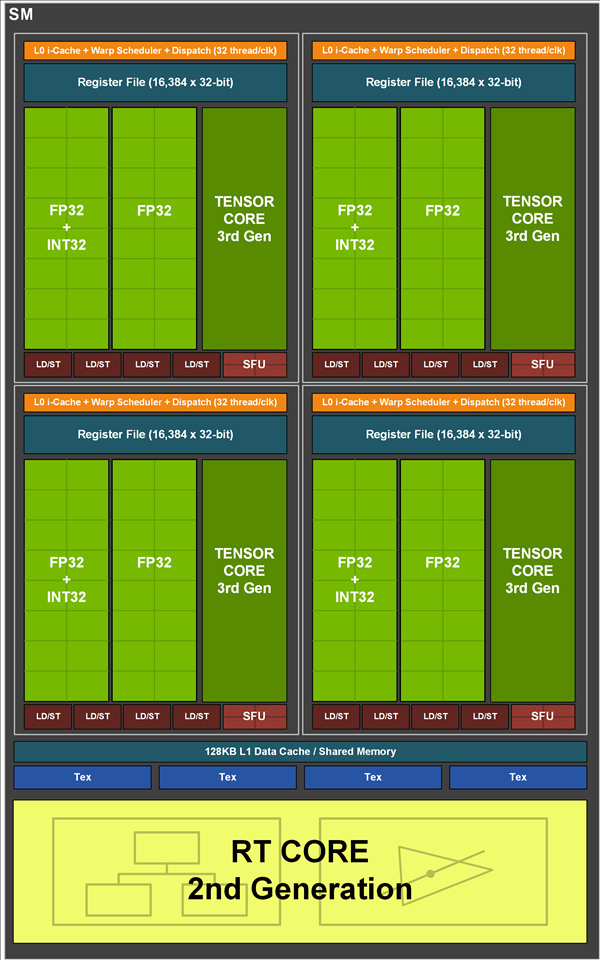
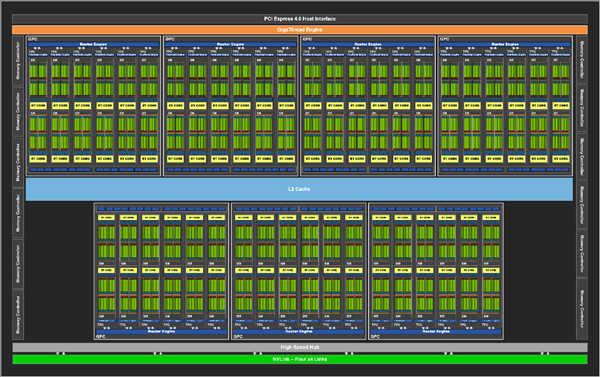


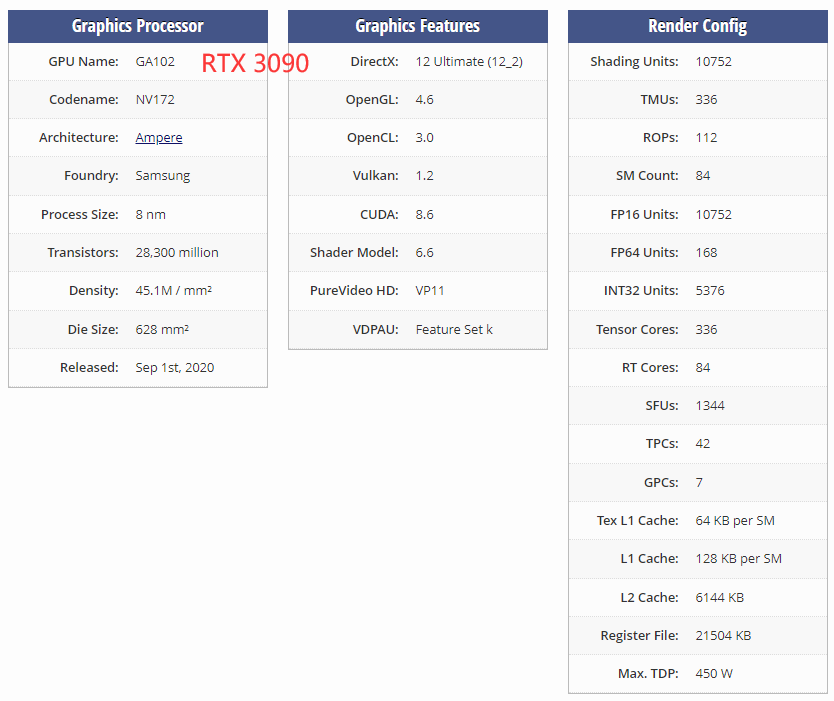
https://zhuanlan.zhihu.com/p/394352476
RISC-V是完全开源的,虽然现在编译器和IDE生态还不行,但是在各国的大力推动下,未来可期。
相比於Arm架構,RISC-V的指令集更小、可以模組化擴充、客製化設計自由度等優點,經過數年發展,漸成為Arm架構的有力挑戰者。
RISC-V现在在物联网的应用是很好的。
RV32I contains 40 unique instructions.
For RV32I, the 32 x registers are each 32 bits wide,

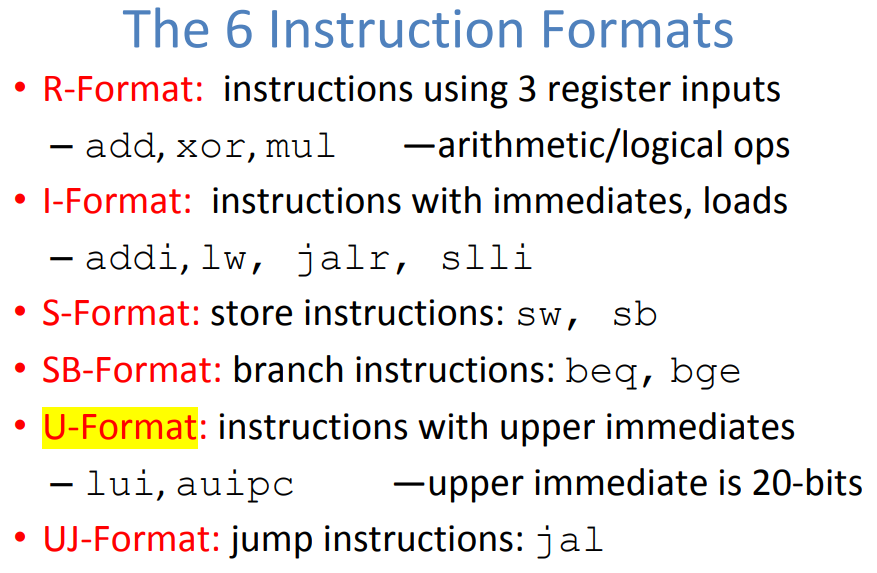
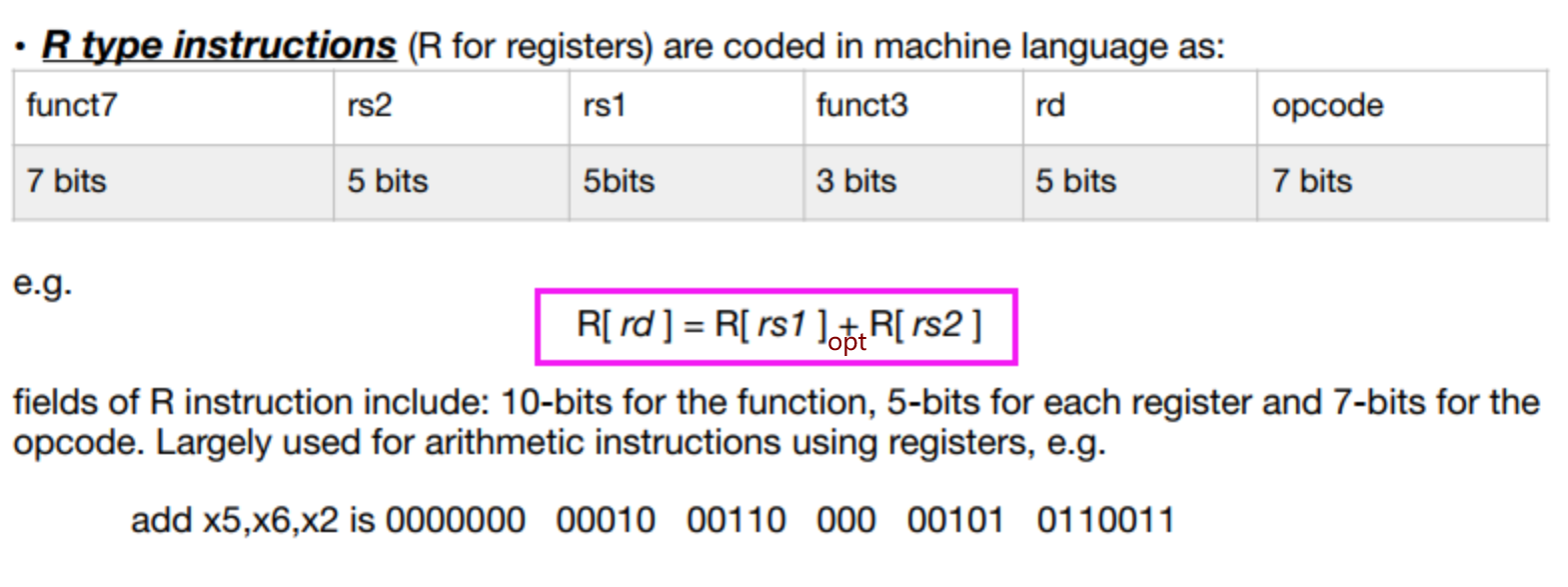
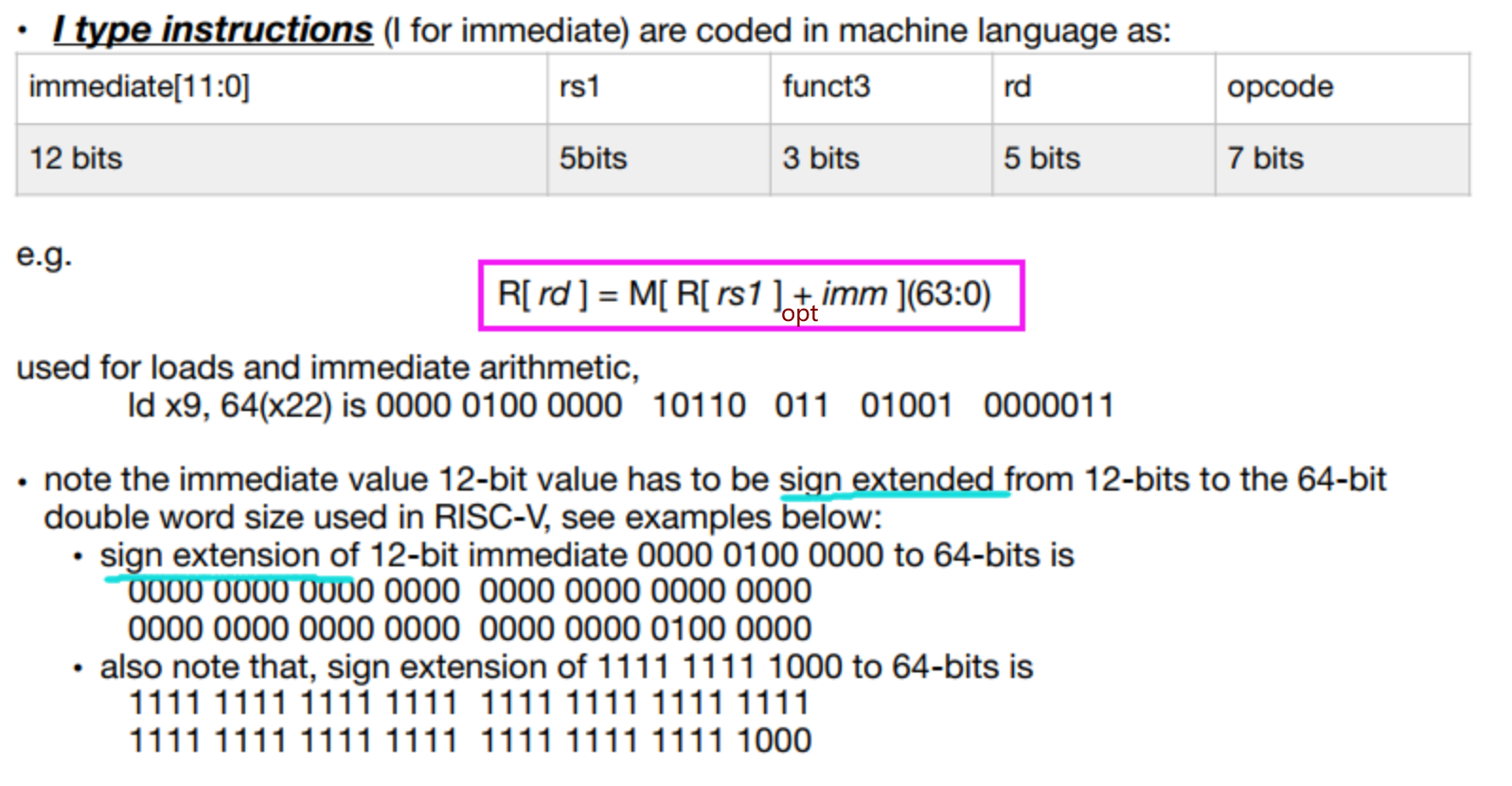
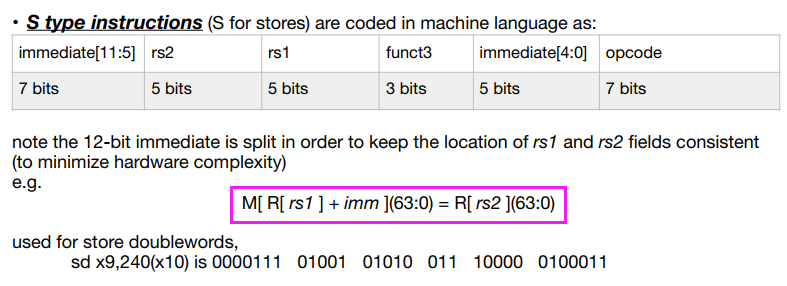
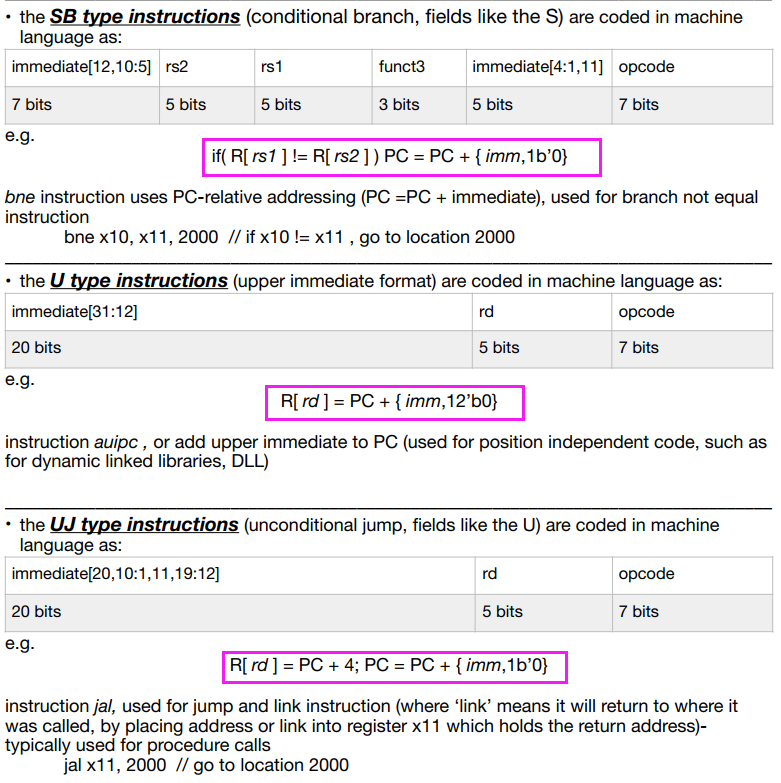
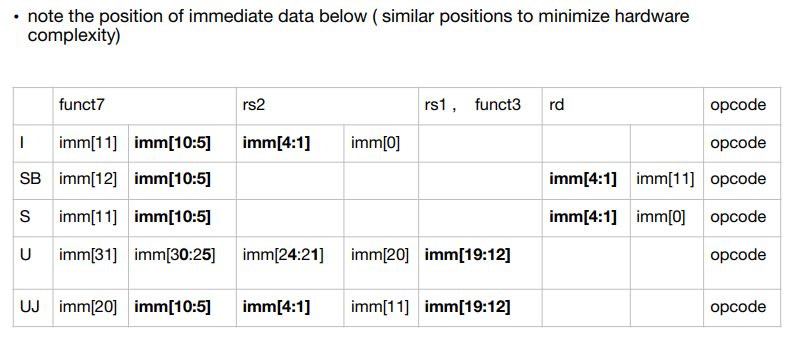
最先是符号位的原因是,立即数是二进制补码表示,也就是有负数的,所以有addi指令但是没有subi指令
为什么跳转的时候,最低位为0。为了支持RVC
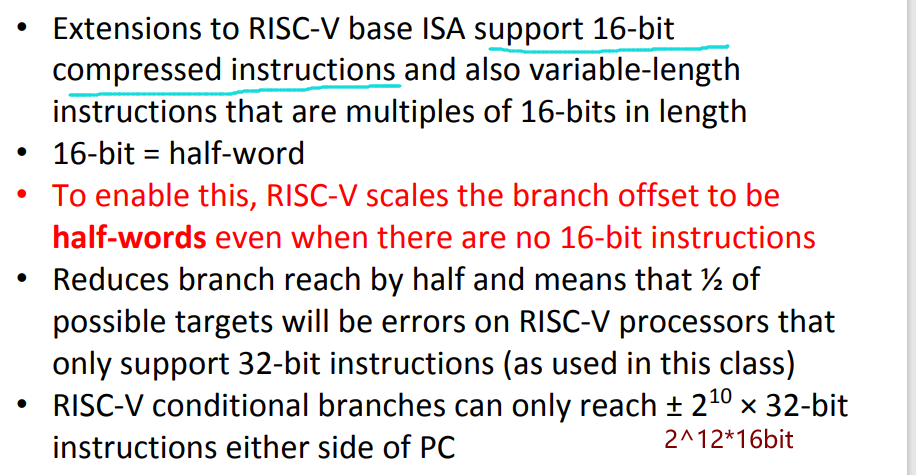
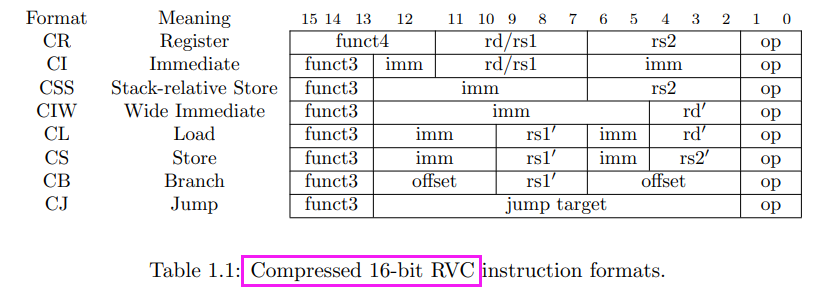

application binary interface(ABI)
reduced version of RV32I designed for embedded systems. The only change is to reduce the number of integer registers to 16.
builds upon the RV32I variant。需要注意的一点,是访问的寄存器和寄存里的地址变成64位了,指令长度还是32位。
register: RV64I widens the integer registers and supported user address space to 64 bits
如果想要在RV64I里运行32位的指令,在指令后加后缀W就行。比如ADDIW
Additional instruction variants are provided to manipulate 32-bit values in RV64I, indicated by a ‘W’ suffix to the opcode.These “*W” instructions ignore the upper 32 bits of their inputs and always produce 32-bit signed values,
The LD instruction loads a 64-bit value from memory into register rd for RV64I.
The LW instruction loads a 32-bit value from memory and sign-extends this to 64 bits before storing
it in register rd for RV64I. The LWU instruction, on the other hand, zero-extends the 32-bit value
from memory for RV64I. LH and LHU are defined analogously for 16-bit values, as are LB and
LBU for 8-bit values. The SD, SW, SH, and SB instructions store 64-bit, 32-bit, 16-bit, and 8-bit
values from the low bits of register rs2 to memory respectively.
寄存器位数和地址空间变成128位。
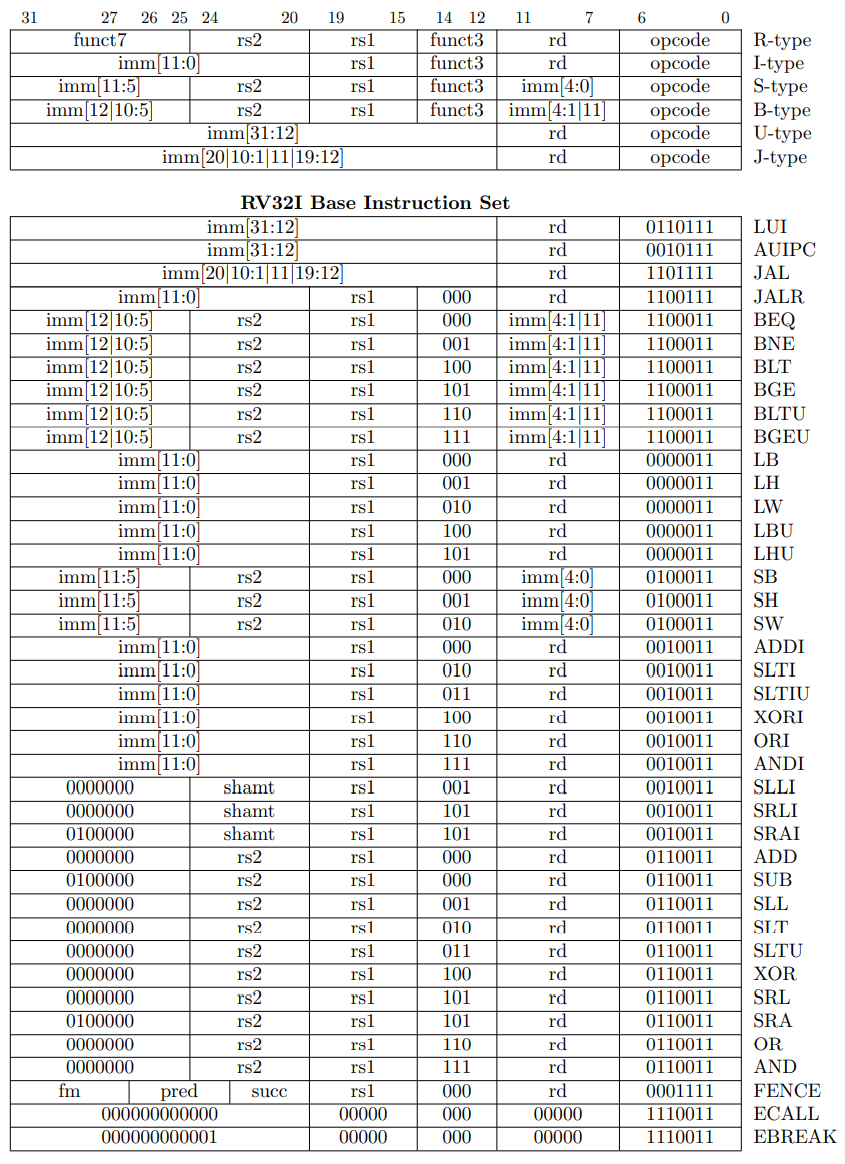
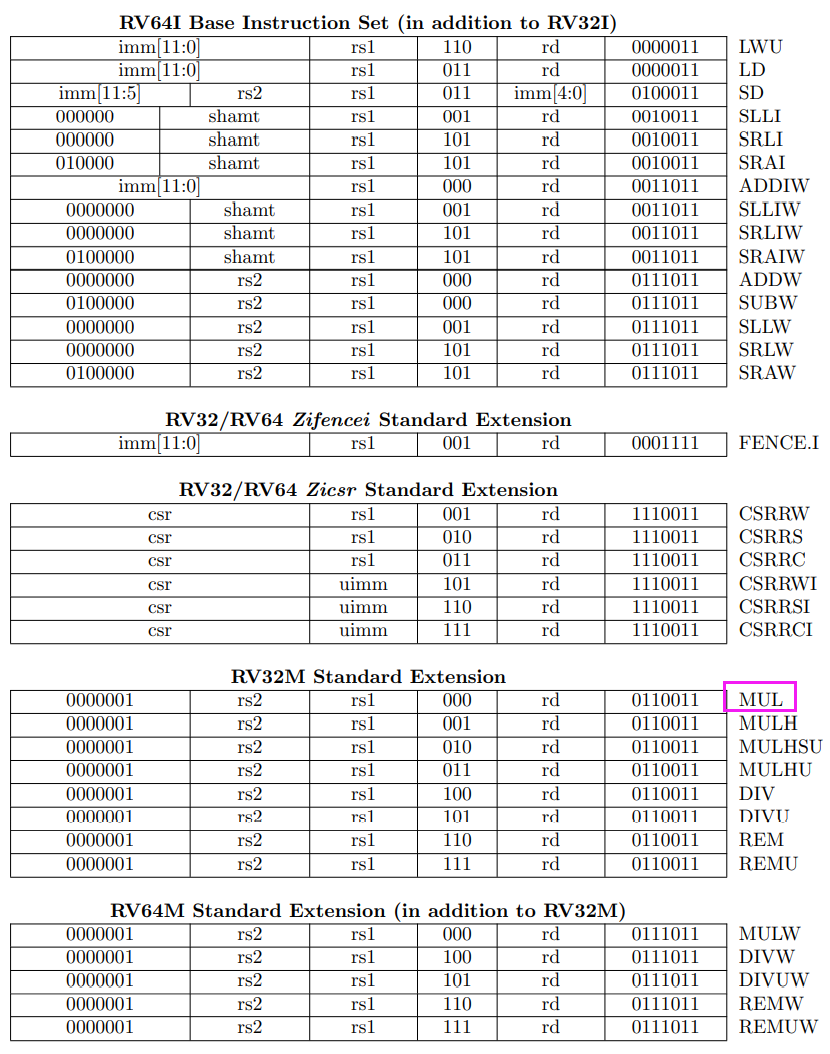
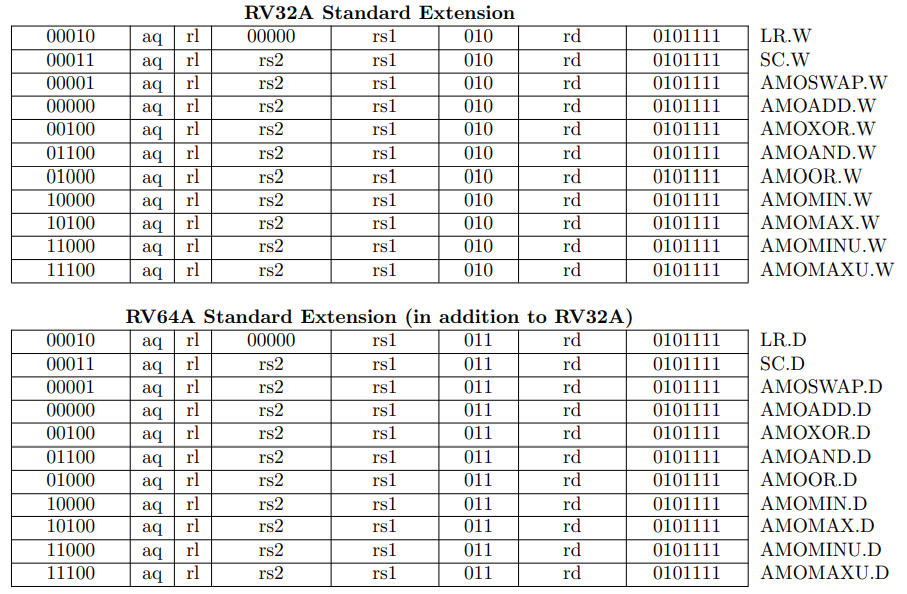
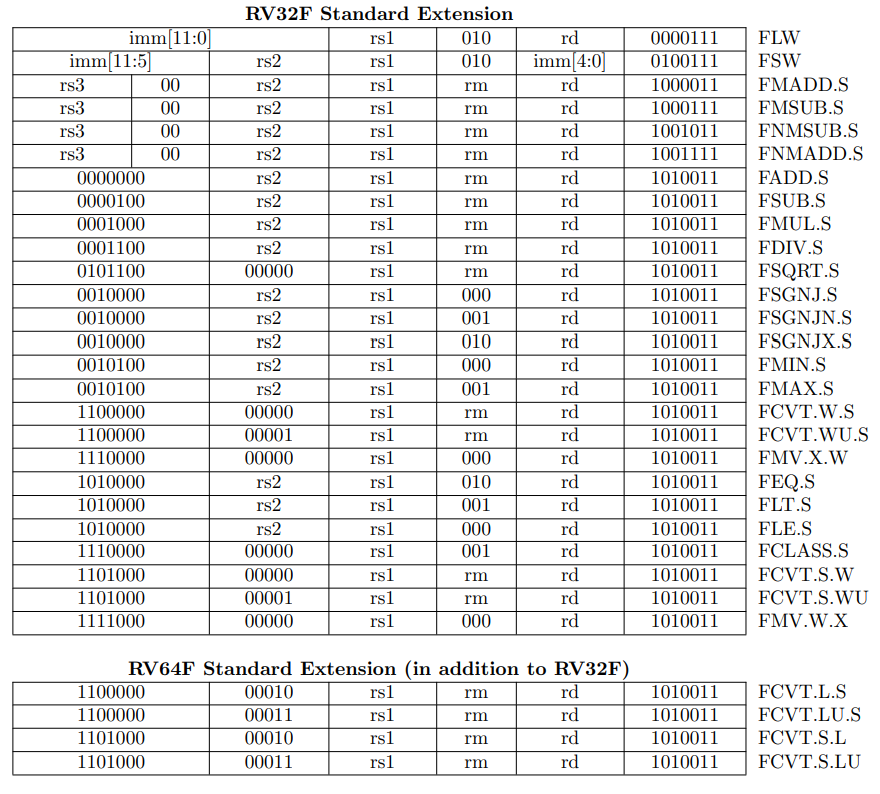
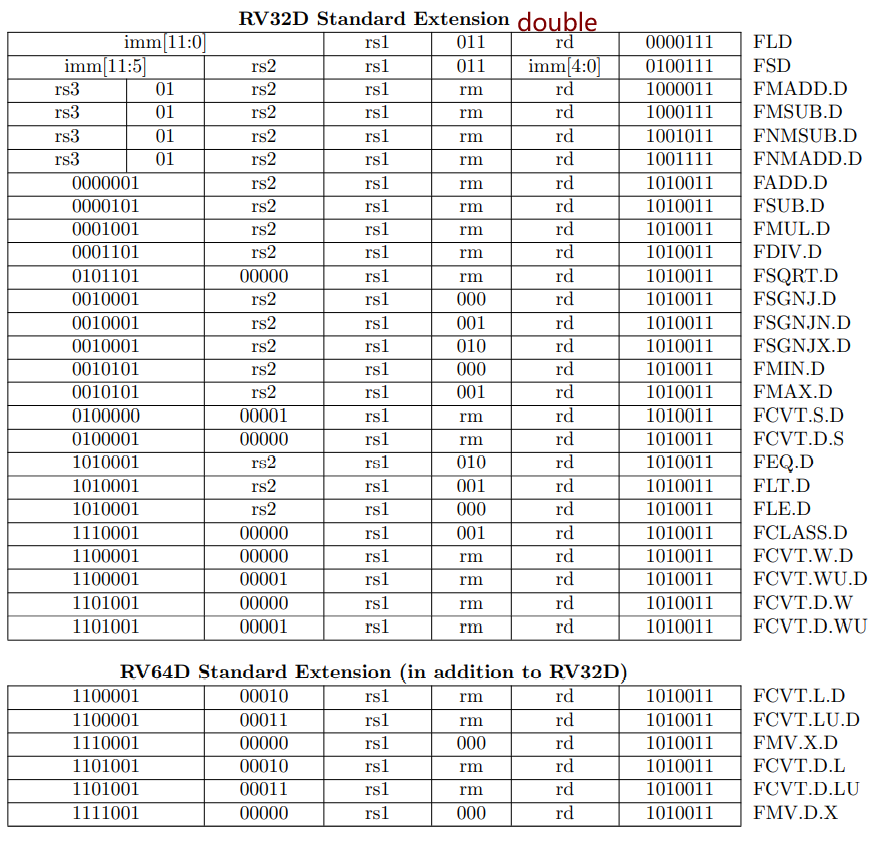
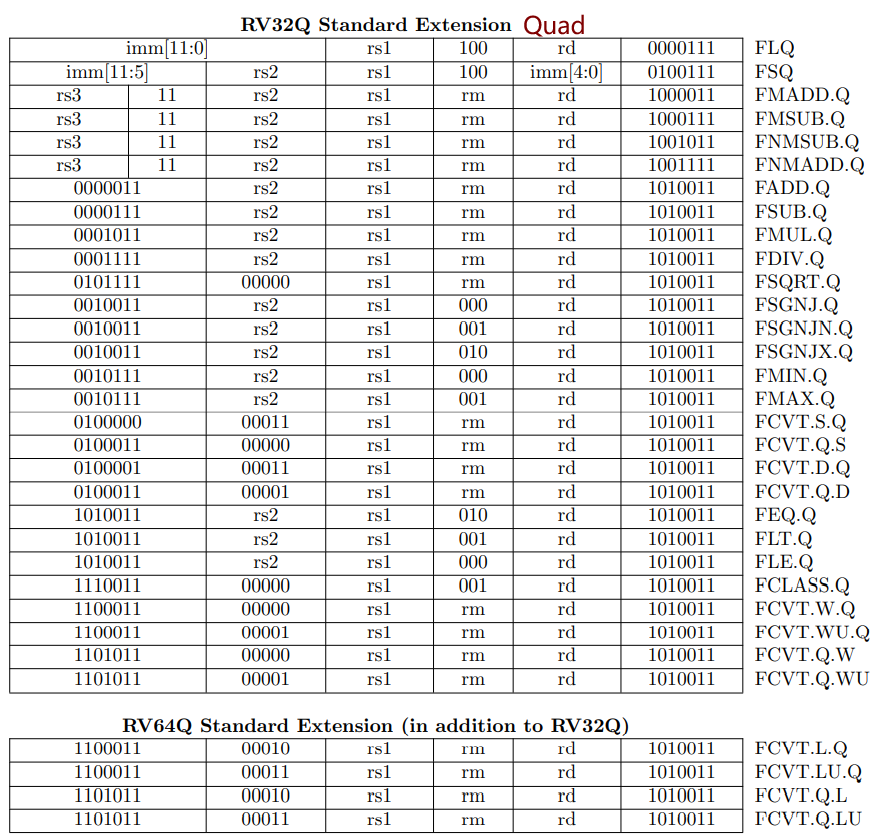
beq rs1, rs2, Label #RISC-V
SW rs2, imm(rs1) # Mem[rs1+imm]=rs2 ,汇编将访存放在最后
add rd, rs1, rs2 # rd = rs1 + rs2
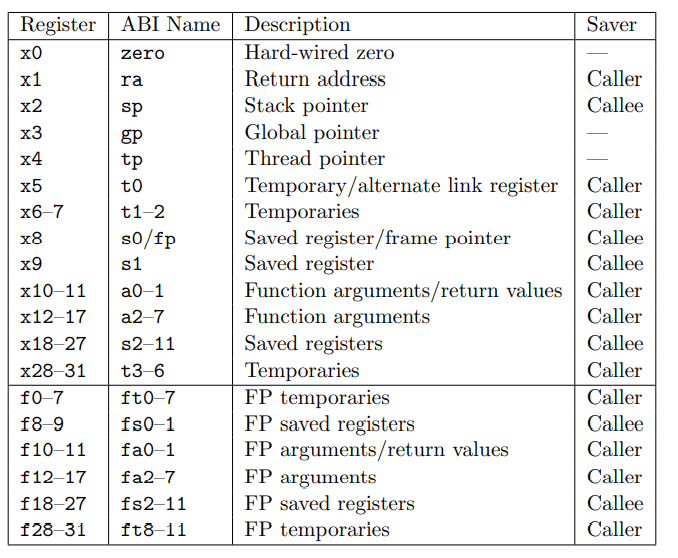
frame pointer = BP in X86
ra = Link register in ARM
Some RISC-V compilers use a frame pointer, fp, or register x8 to point to first double word of frame.
先用高维,预留低位来拓展
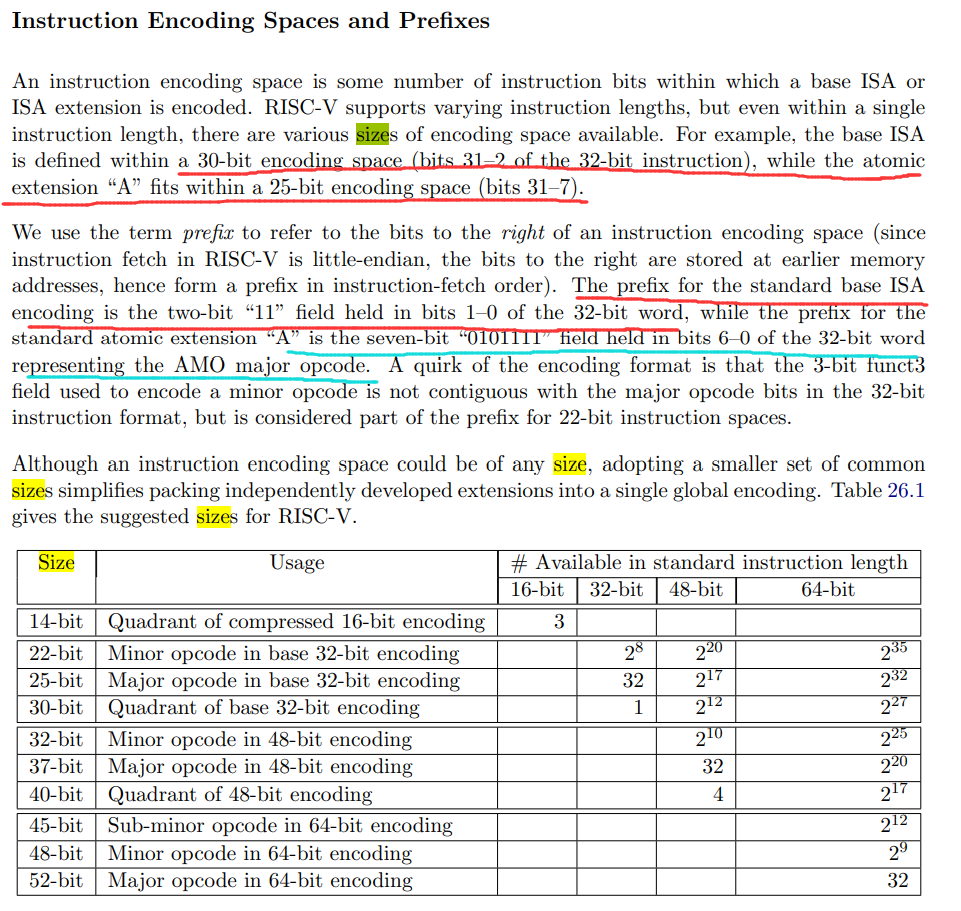
RVC (compressed)
32位时
minor 不包括func3 + opcode (去除固定2位)
major没func3
编译器模拟器
https://godbolt.org/

array由于大小是一开始固定好的,分配在栈里。而vector是变的,分配在堆里?
https://chivier.github.io/2022/02/04/2022/2202-QemuTest/
但是RVV向量化在git其他分支里,gcc7和8编译不会错
Control and Status Registers (CSRs)
暂无
无
1981年,被Intel拒绝的Acorn(橡子) Computer Ltd公司,一气之下觉得基于当时新型处理器的研究——简化指令集,自己设计一款微处理器。
1985年,第一款芯片问世Acorn RISC Machine,简称ARM。
1990年,Acorn为了和苹果合作,专门成立了一家公司,名叫ARM,但是全称是Advanced RISC Machines。
虽然有苹果的合资,但是初期极其艰难,ARM决定改变他们的产品策略——他们不再生产芯片,转而以授权的方式,将芯片设计方案转让给其他公司,即“Partnership”开放模式。
通过IP(Intellectual Property,知识产权)授权,授权费和版税就成了ARM的主要收入来源。这种授权模式,极大地降低了自身的研发成本和研发风险。风险共担、利益共享的模式使得低成本创新成为可能。
1993年,ARM将产品授权给德州仪器,给ARM公司带来了重要的突破。也给ARM公司树立了声誉,证实了授权模式的可行性。
ARM+Nokia,诺基亚6110成为了第一部采用ARM处理器的GSM手机,上市后获得了极大的成功,成为当年的机皇。 1998年4月17日,业务飞速发展的ARM控股公司,同时在伦敦证交所和纳斯达克上市。 虽然后来苹果公司,逐步卖掉了所持有的ARM股票,鉴于苹果研究人员对ARM芯片架构非常熟悉,iPod也继续使用了ARM芯片。
ARM+Apple:创造移动互联网、iPhone、ARM指令集的黄金时代。 第一代iPhone,使用了ARM设计、三星制造的芯片。Iphone的热销,App Store的迅速崛起,让全球移动应用彻底绑定在ARM指令集上。
紧接着,2008年,谷歌推出了Android(安卓)系统,也是基于ARM指令集。
从ARM角度来看,苹果M1一旦成功也将帮助ARM实现一直以来希望撕开X86垄断的个人计算机市场的野心。
2016年7月18日,曾经投资阿里巴巴的孙正义和他的日本软银集团,以243亿英镑(约309亿美元)收购了ARM集团。
至此,ARM成为软银集团旗下的全资子公司。不过,当时软银集团表示,不会干预或影响ARM未来的商业计划和决策。
在2020年6月22日,日本超算“富岳”(Fugaku)成为史上第一台基于ARM芯片的全球超算TOP500冠军。
小结:轻资产、开放合作、共赢。 ARM在低功耗方面的DNA,刚好赶上了移动设备爆发式发展的时代,最终造就了它的辉煌。在即将到来的万物互联时代,可以预见,ARM极有可能取得更大的成功。
2020年9月13日,NVIDIA(英伟达)和软银集团 (SoftBank Group Corp., SBG) 宣布了一项最终协议,根据此协议,NVIDIA 将以 400 亿美元的价格从软银集团和软银愿景基金(统称“软银”)收购 Arm Limited。
但是这场收购在全球IT行业掀起轩然大波,包括苹果、Intel、高通、三星、特斯拉等大部分巨头均表示反对。英国也反对。至今悬而未决。
主要区别在
一些常见问题:
Intel并没有开发64位版本的x86指令集。64位的指令集名为x86-64(有时简称为x64),实际上是AMD设计开发的。Intel想做64位计算,它知道如果从自己的32位x86架构进化出64位架构,新架构效率会很低,于是它搞了一个新64位处理器项目名为IA64。由此制造出了Itanium系列处理器。
同时AMD知道自己造不出能与IA64兼容的处理器,于是它把x86扩展一下,加入了64位寻址和64位寄存器。最终出来的架构,就是 AMD64,成为了64位版本的x86处理器的标准。IA64项目并不算得上成功,现如今基本被放弃了。Intel最终采用了AMD64。Intel当前给出的移动方案,是采用了AMD开发的64位指令集(有些许差别)的64位处理器。
x86-64架构诞生颇有时代意义。当时,处理器的发展遇到了瓶颈,内存寻址空间由于受到32位CPU的限制而只能最大到约4G。AMD主动把32位x86(或称为IA-32)扩充为64位。它以一个称为AMD64的架构出现(在重命名前也称为x86-64),且以这个技术为基础的第一个产品是单内核的Opteron和Athlon 64处理器家族。由于AMD的64位处理器产品线首先进入市场,且微软也不愿意为Intel和AMD开发两套不同的64位操作系统,Intel也被迫采纳AMD64指令集且增加某些新的扩充到他们自己的产品,命名为EM64T架构(显然他们不想承认这些指令集是来自它的主要对手),EM64T后来被Intel正式更名为Intel 64。这两者被统称为x86-64或x64,开创了x86的64位时代。
而ARM在看到移动设备对64位计算的需求后,于2011年发布了ARMv8 64位架构,这是为了下一代ARM指令集架构工作若干年后的结晶。为了基于原有的原则和指令集,开发一个简明的64位架构,ARMv8使用了两种执行模式,AArch32和AArch64。顾名思义,一个运行32位代码,一个运行64位代码。ARM设计的巧妙之处,是处理器在运行中可以无缝地在两种模式间切换。这意味着64位指令的解码器是全新设计的,不用兼顾32位指令,而处理器依然可以向后兼容。
在cpu同制程工艺下,
ARM的处理器有个特点,就是乱序执行能力不如X86。
X86为了增强对随机操作命令情况下的处理能力,加强了乱序指令的执行、单核的多线程能力。
缺点就是,无法很有效的关闭和恢复处理器子模块,因为一旦关闭,恢复起来就很慢,从而造成低性能。为了保持高性能,就不得不让大部分的模块都保持开启,并且时钟也保持切换。这样做的直接后果就是耗电高。
ARM的指令强在确定次序的执行,并且依靠多核而不是单核多线程来执行。这样容易保持子模块和时钟信号的关闭,显然就更省电。
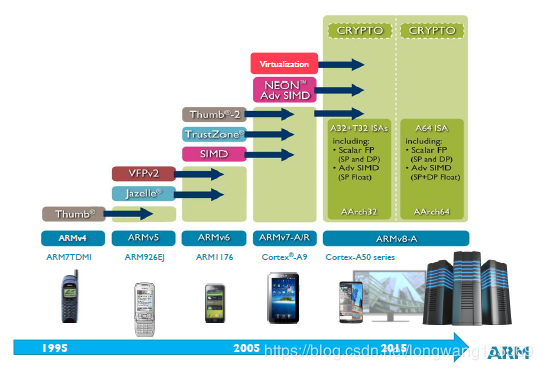
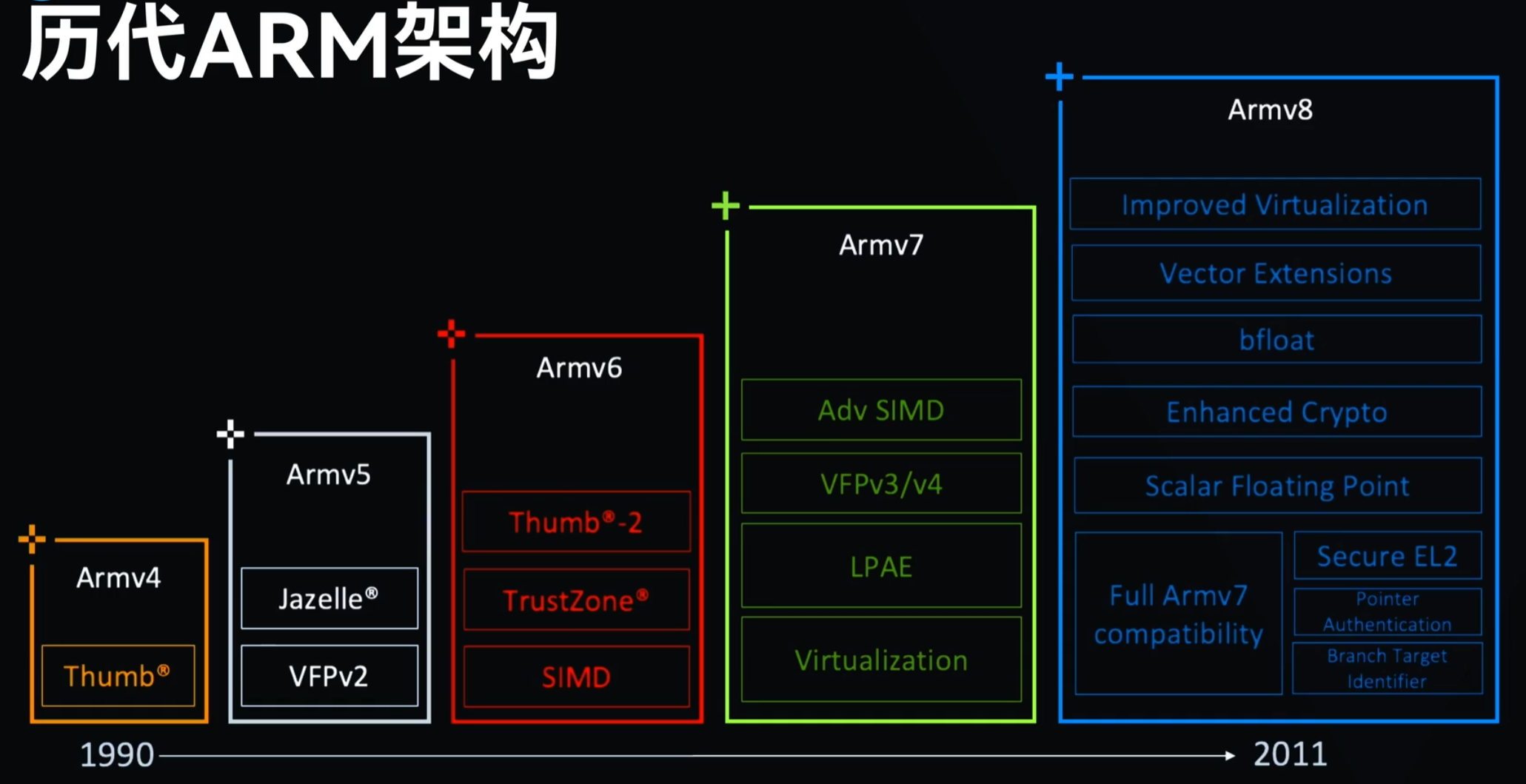
ARM11芯片之后,也就是从ARMv7架构开始,改以Cortex命名,并分为三个系列,分别是Cortex-A,Cortex-R,Cortex-M。呵呵,发现了没,三个字母又是A、R、M。
Cortex-A系列(A:Application) 针对日益增长的消费娱乐和无线产品设计,用于具有高计算要求、运行丰富操作系统及提供交互媒体和图形体验的应用领域,如智能手机、平板电脑、汽车娱乐系统、数字电视等。 Cortex-A目前有A7x系列为代表的性能大核产品线和A5x系列为代表低功耗小核产品线。 其中大核运行短时间的高性能需求任务;小核运行低性能需求的任务或者在待机状态支持背景任务运行。
Cortex-R系列 (R:Real-time) 针对需要运行实时操作的系统应用,面向如汽车制动系统、动力传动解决方案、大容量存储控制器等深层嵌入式实时应用。
Cortex-M系列(M:Microcontroller) 该系列面向微控制器microcontroller (MCU) 领域,主要针对成本和功耗敏感的应用,如智能测量、人机接口设备、汽车和工业控制系统、家用电器、消费性产品和医疗器械等。智能互联时代应用前景非常广阔。
Cortex-SC系列(SC:SecurCore) 其实,除了上述三大系列之外,还有一个主打安全的(SC:SecurCore),主要用于政府安全芯片。
自 2011 年 10 月 Arm 首次公布 Armv8架构以来,已经有近 10 年的时间了
2021年3月31日,ARM V9发布
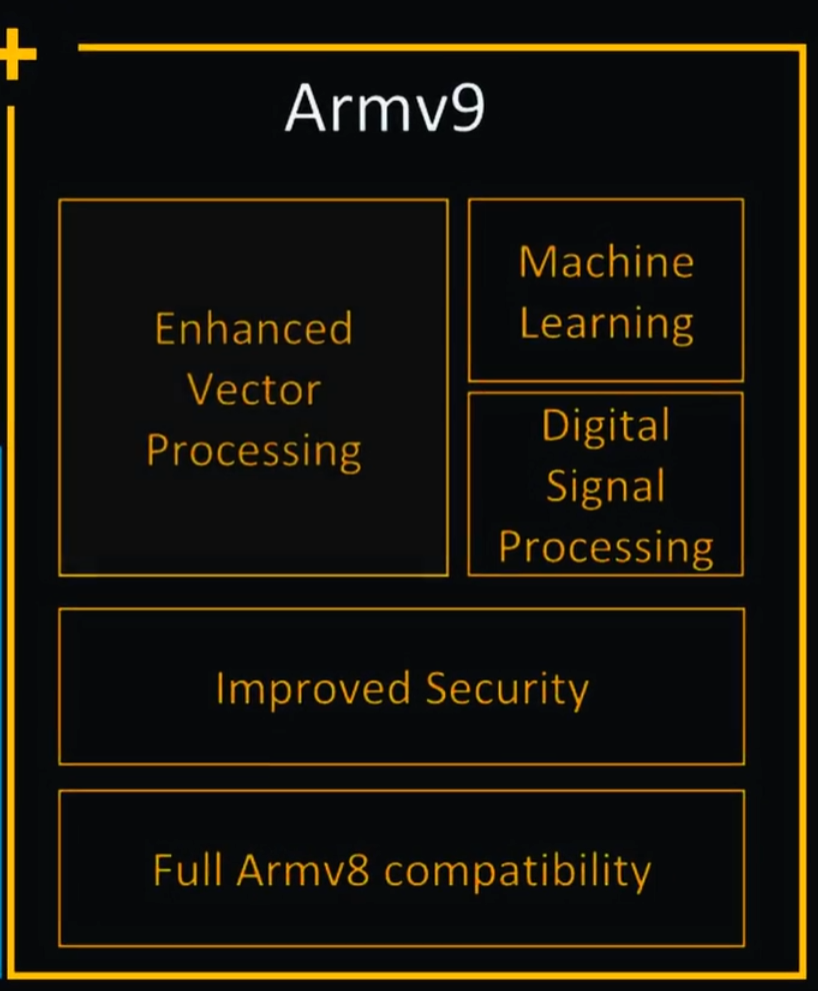

来自极客湾
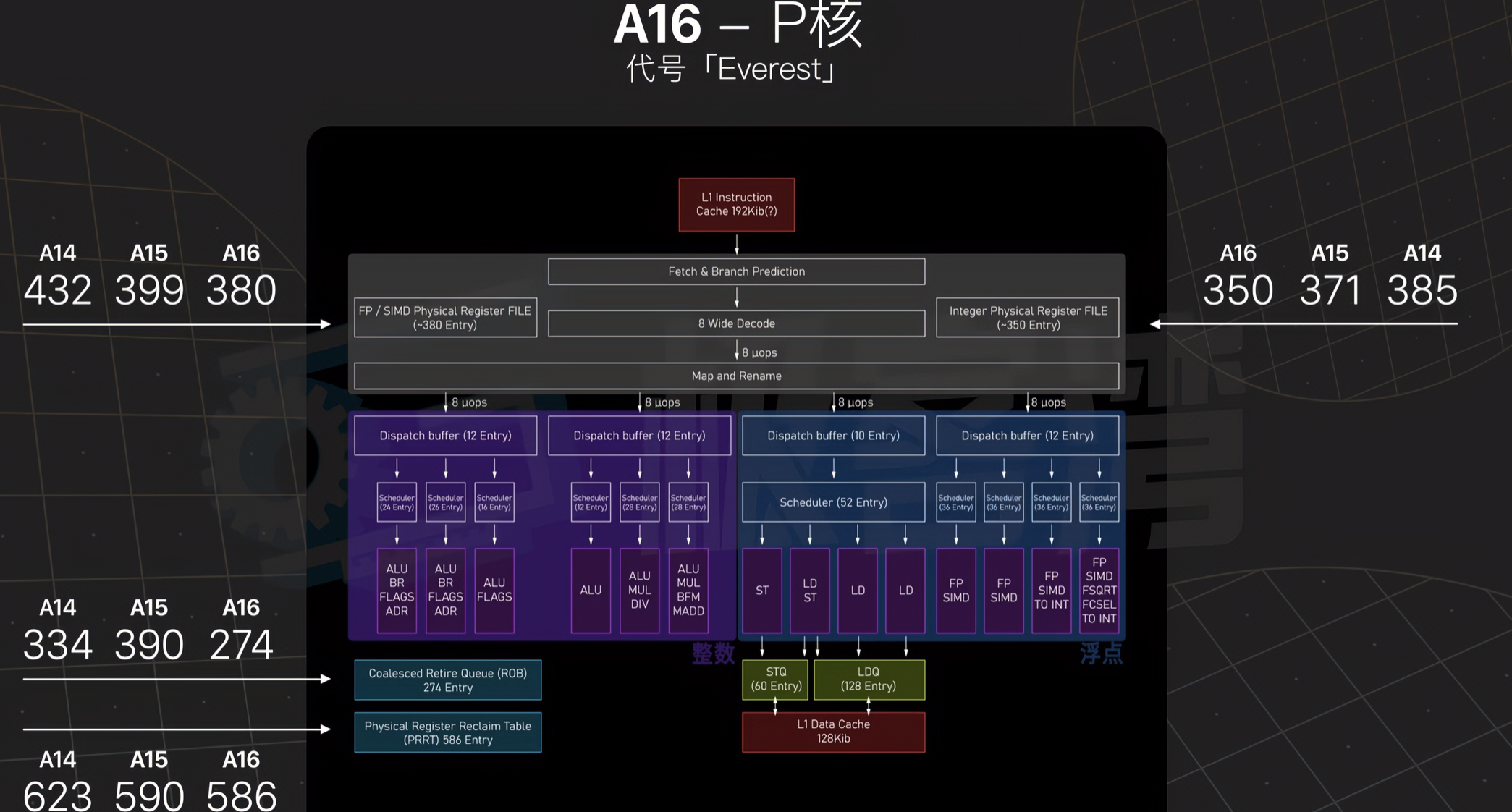
白色部分为加宽的部分
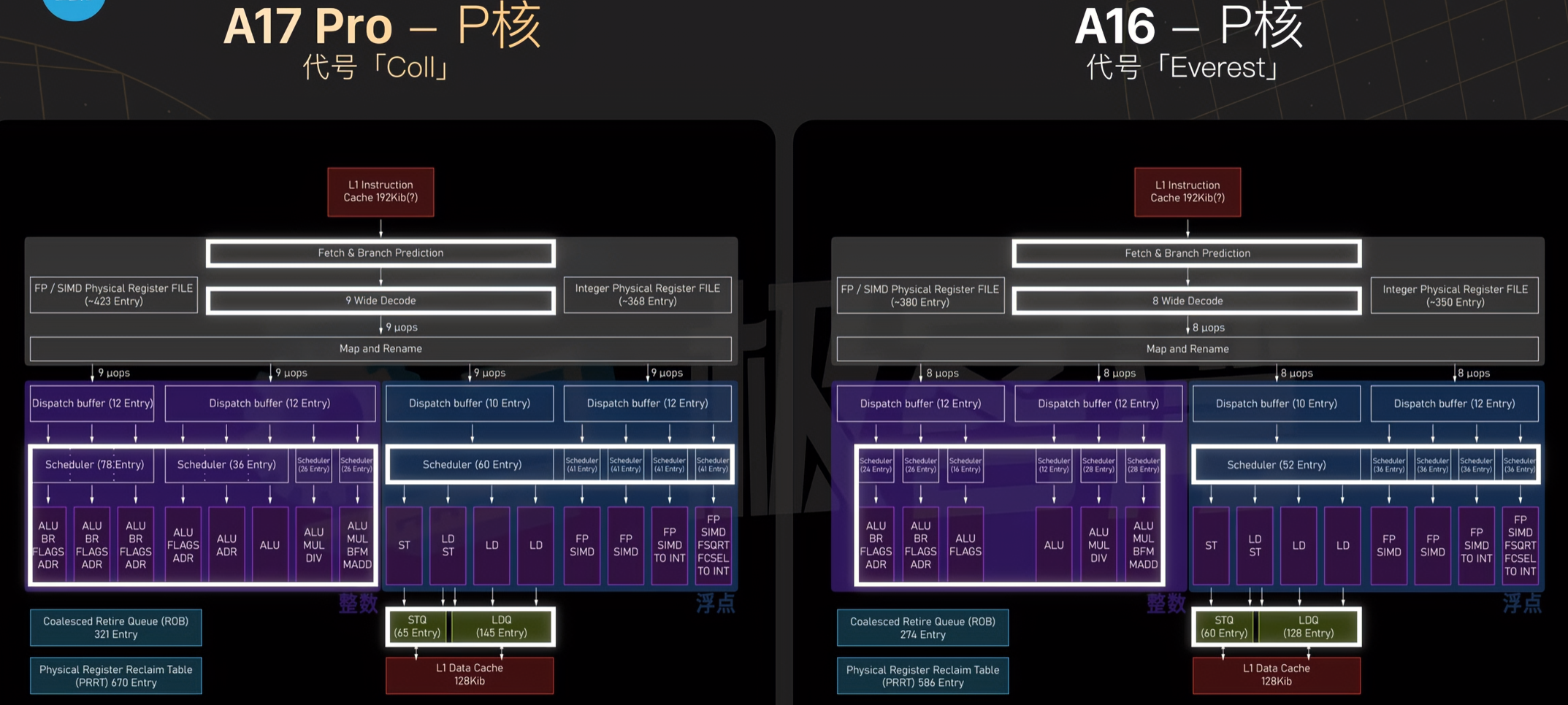
AArch64:AArch64 state只支持A64指令集。这是一个固定长度的指令集,使用32位指令编码。
Arch32:AArch32 state支持以下指令集:
A32:这是一个固定长度的指令集,使用32位指令编码。它是与ARMv7 ARM指令集兼容。
T32:这是一个可变长度指令集,它同时使用16位和32位指令编码。它与ARMv7 Thumb®指令集兼容。
而CISC指令集都是变长的。
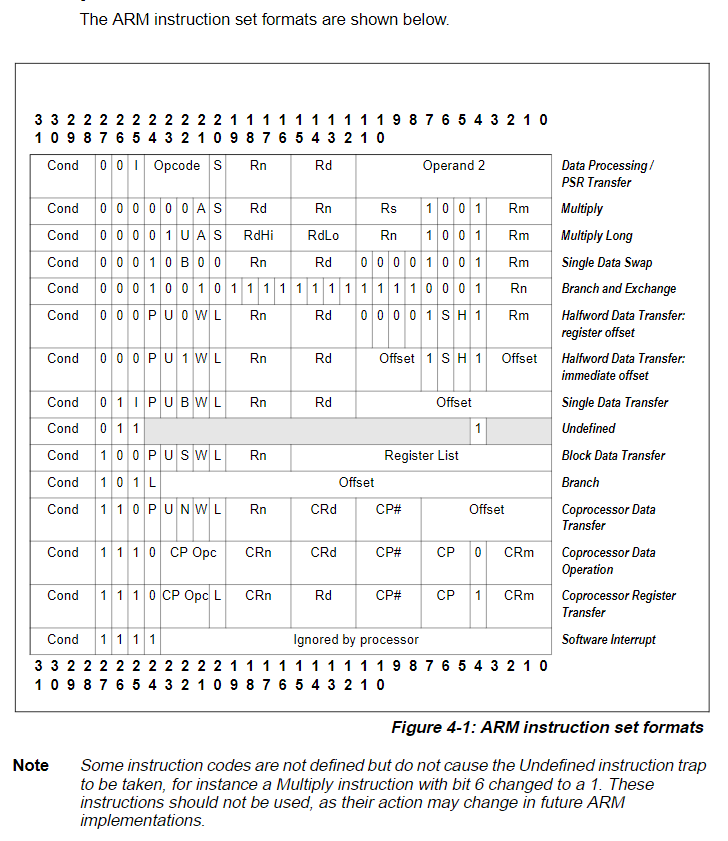
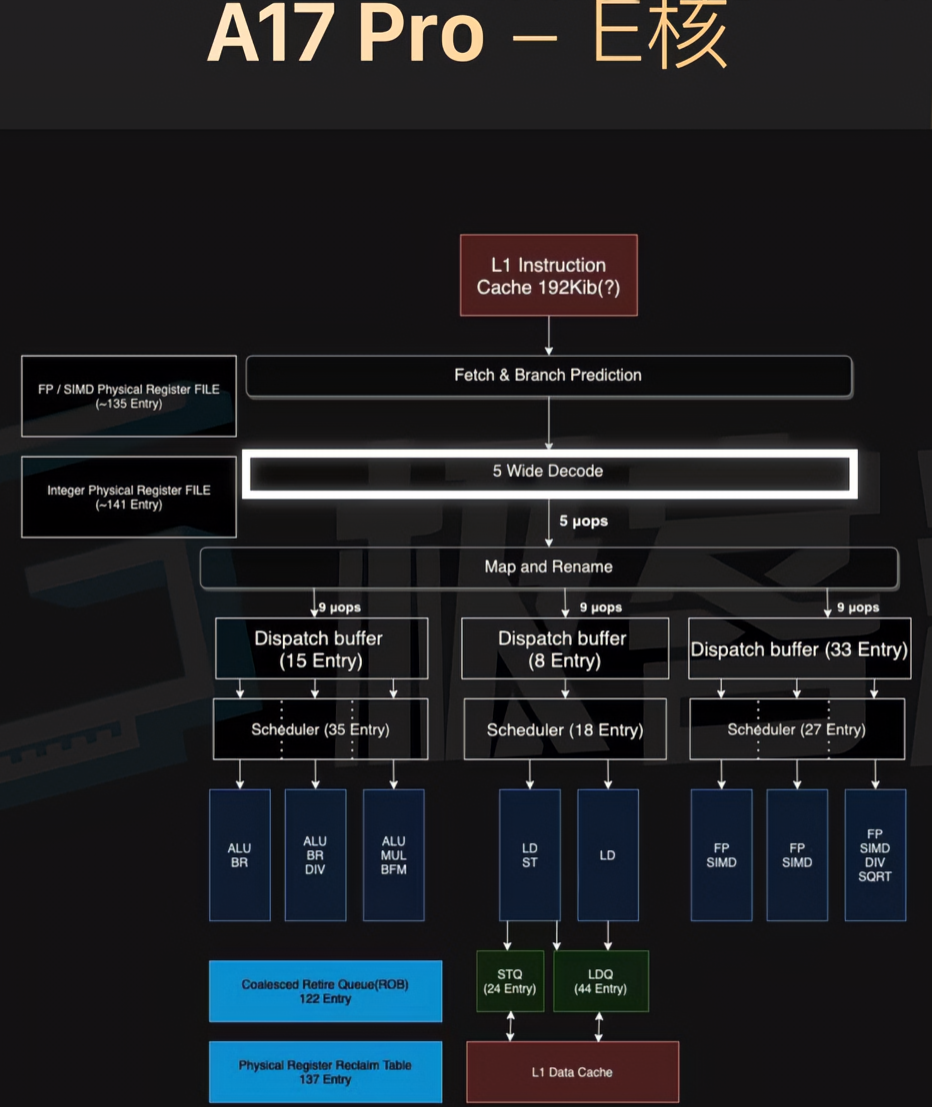
指令长度的范围可以说是相当广泛,从微控制器的4 bit,到VLIW系统的数百bit。在个人电脑,大型机,超级电脑内的处理器,其内部的指令长度介于8到64 bits(在x86处理器结构内,最长的指令长达15 bytes,等于120 bits)。在一个指令集架构内,不同的指令可能会有不同长度。在一些结构,特别是大部分的精简指令集(RISC),指令是固定的长度,长度对应到结构内一个字的大小。在其他结构,长度则是byte的整数倍或是一个halfword。
https://www.eet-china.com/mp/a23067.html
https://winddoing.github.io/post/7190.html
In AArch64 state, the following registers are available:
 X31 stack pointer
X31 stack pointer
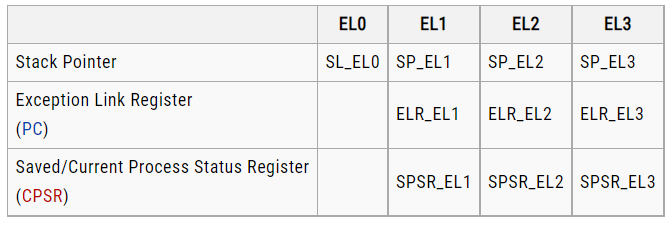
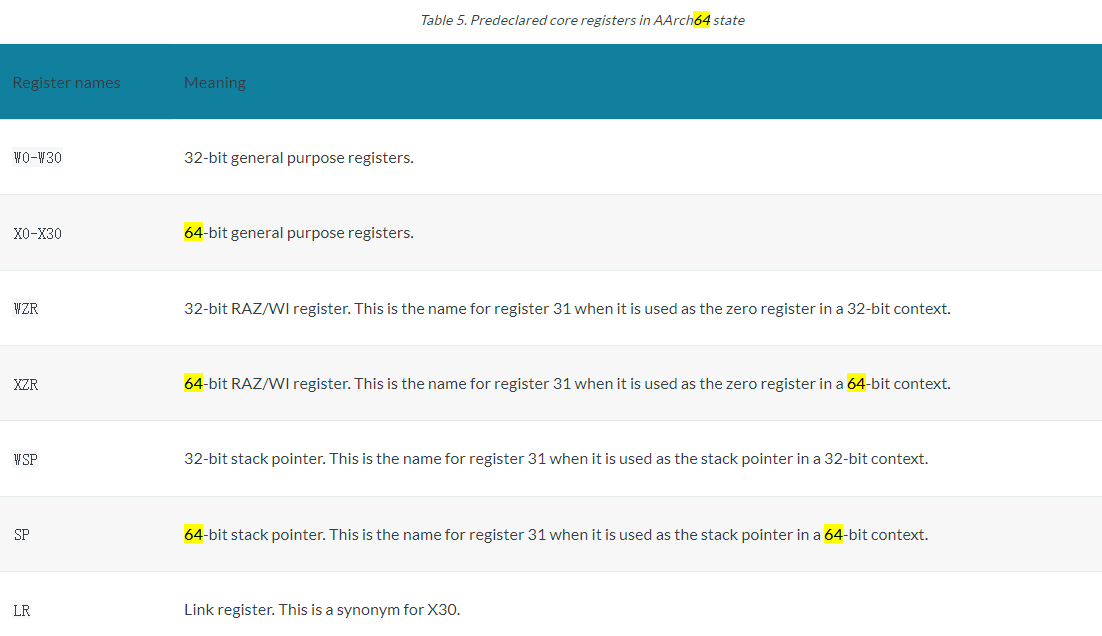
You can write the register names either in all upper case or all lower case.
In AArch64 state, the PC is not a general purpose register and you cannot access it by name.
All these registers are 64 bits wide except SPSR_EL1, SPSR_EL2, and SPSR_EL3, which are 32 bits wide.
Most A64 integer instructions can operate on either 32-bit or 64-bit registers.
The names Wn and Xn, where n is in the range 0-30. W means 32-bit and X means 64-bit.
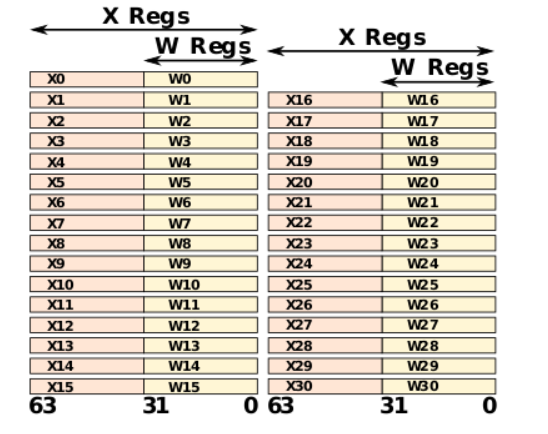
更具体的细节请看 ARMv8 Instruction Set Overview 4.4.1 General purpose (integer) registers
更具体的细节请看 ARMv8 Instruction Set Overview 4.4.2 FP/SIMD registers 或者 Assembly Arm文章
 向量寄存器有32个v0 - v31, 由于表示方法 Qn 也是 128位,所以汇编有时以 %qn出现(n为第几个寄存器)
向量寄存器有32个v0 - v31, 由于表示方法 Qn 也是 128位,所以汇编有时以 %qn出现(n为第几个寄存器)
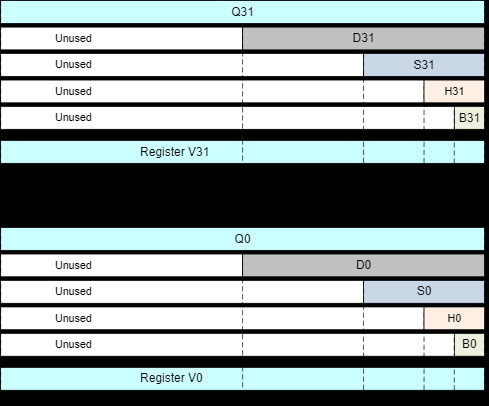
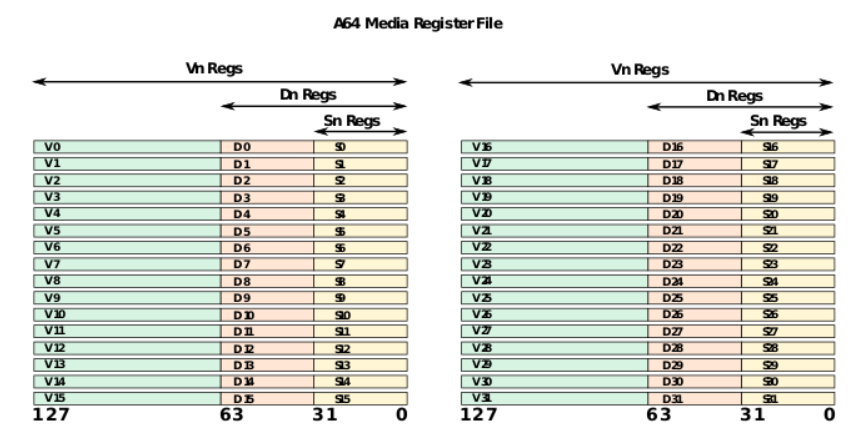
In all ARM processors in AArch32 state, the following registers are available and accessible in any processor mode:
r11是optional的,backtrace时候会启用,被称为FP,即frame pointer。
r12 IP The Intra-Procedure-call scratch register. (可简单的认为暂存SP)
r13 SP The Stack Pointer.
r14 LR The Link Register. 用于保存函数调用的返回地址
r15 PC The Program Counter.
x86的bp寄存器其实有两个功能:
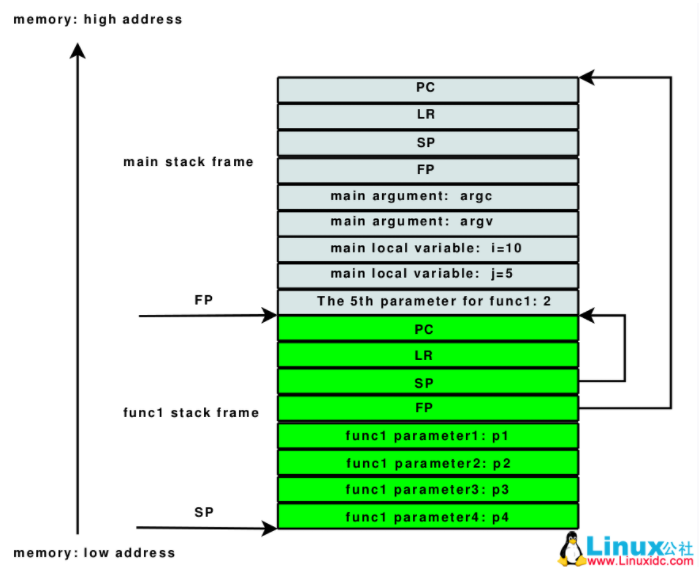
https://blog.csdn.net/tangg555/article/details/62231285
The x86 architecture has 8 General-Purpose Registers (GPR), 6 Segment Registers, 1 Flags Register and an Instruction Pointer. 64-bit x86 has additional registers.

RIP (EIP)
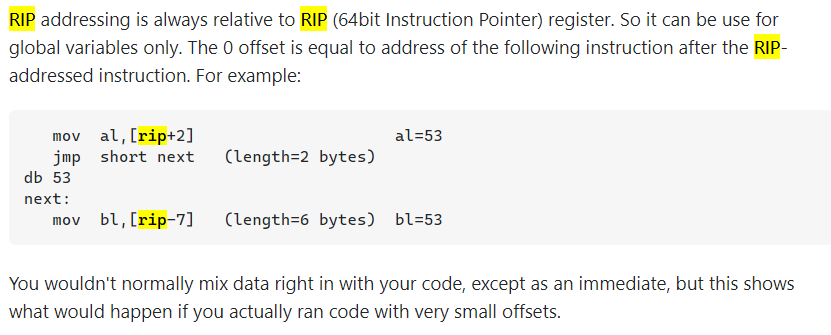
http://home.ustc.edu.cn/~shaojiemike/posts/simd/#simd%E5%AF%84%E5%AD%98%E5%99%A8
某个寄存器是只读的,存的值一直为0
Most RISC architectures have a “zero register”(WZR/XZR reg31 for ARM) which always reads as zero and cannot be written to.
While the x86/x64 architectures do not have an architectural zero register.
通过zero Idiom :
The register renamer detects certain instructions (xor reg, reg and sub reg, reg and various others) that always zero a register
2019年1月,华为跟进一步发布自研服务器芯片鲲鹏920。该服务器芯片搭载了64颗海思基于ARMv8架构自研的泰山内核。整体服务器性能较市场现有竞品提升20%。2019年5月,华为宣布获得ARMv8架构永久授权,并且强调华为海思有持续自行开发设计基于ARM授权架构的处理器。
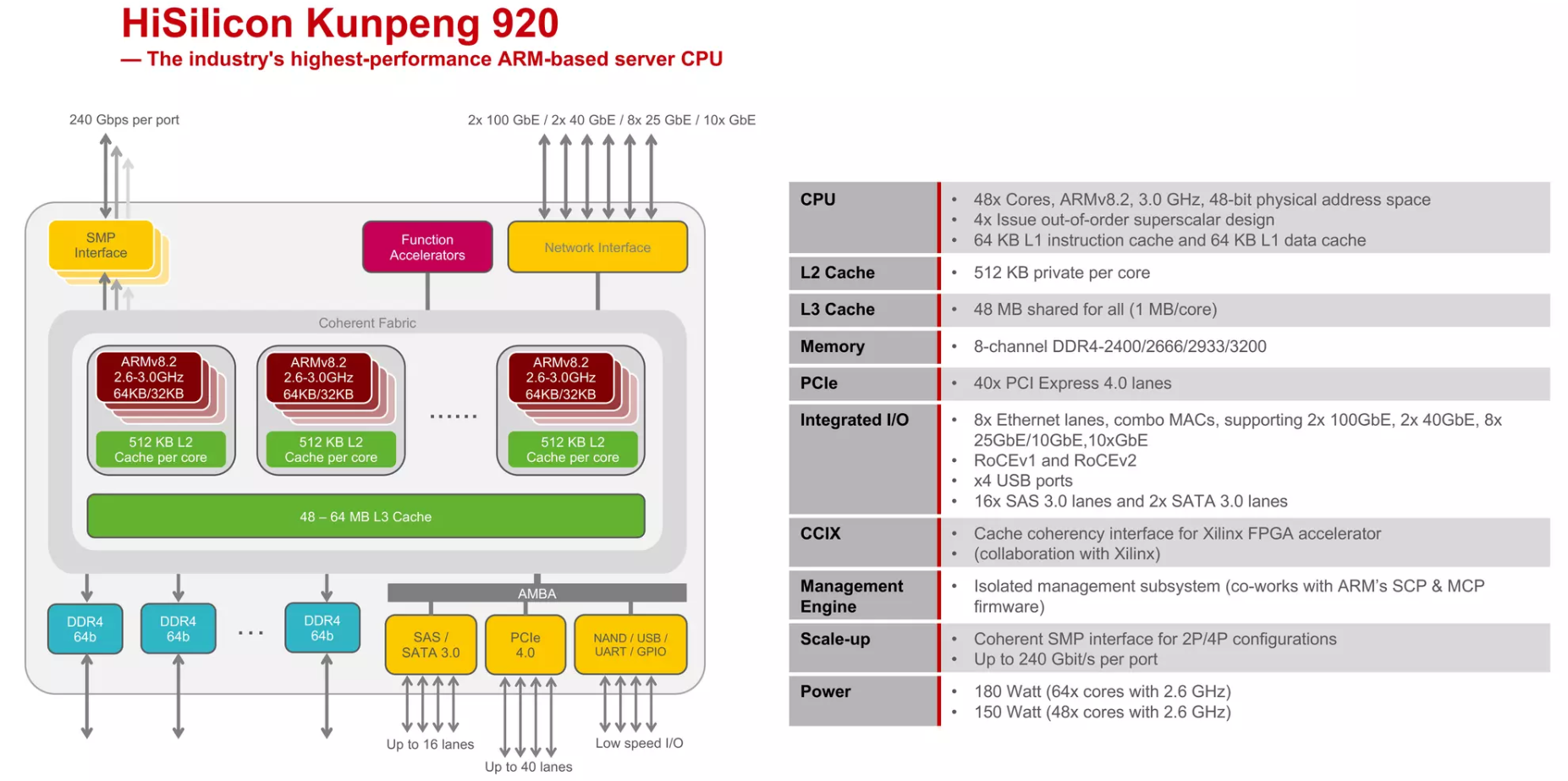
wikiChip https://en.wikichip.org/wiki/hisilicon/microarchitectures/taishan_v110
Architecture: aarch64
CPU op-mode(s): 64-bit
Byte Order: Little Endian
CPU(s): 96
On-line CPU(s) list: 0-95
Thread(s) per core: 1
Core(s) per socket: 48
Socket(s): 2
NUMA node(s): 4
Vendor ID: 0x48
Model: 0
Stepping: 0x1
CPU max MHz: 2600.0000
CPU min MHz: 200.0000
BogoMIPS: 200.00
L1d cache: 6 MiB
L1i cache: 6 MiB
L2 cache: 48 MiB
L3 cache: 192 MiB
NUMA node0 CPU(s): 0-23
NUMA node1 CPU(s): 24-47
NUMA node2 CPU(s): 48-71
NUMA node3 CPU(s): 72-95
Vulnerability Itlb multihit: Not affected
Vulnerability L1tf: Not affected
Vulnerability Mds: Not affected
Vulnerability Meltdown: Not affected
Vulnerability Spec store bypass: Not affected
Vulnerability Spectre v1: Mitigation; __user pointer sanitization
Vulnerability Spectre v2: Not affected
Vulnerability Srbds: Not affected
Vulnerability Tsx async abort: Not affected
Flags: fp asimd evtstrm aes pmull sha1 sha2 crc32 atomics fphp asimdhp cpuid asimdrdm j
scvt fcma dcpop asimddp asimdfhm
鲲鹏920明显的几个特点,96个核,4个NUMA node, cache相较于Intel特别大
暂无
暂无
致谢ARM、驭势资本、EETOP...等原编著者,来源华为云社区 https://bbs.huaweicloud.com/blogs/262835
https://developer.arm.com/documentation
RIP register
https://stackoverflow.com/questions/42215105/understanding-rip-register-in-intel-assembly
关于X86 与 arm的寄存器的区别写在了arm那篇下
https://developer.arm.com/documentation/dui0068/b/CIHEDHIF
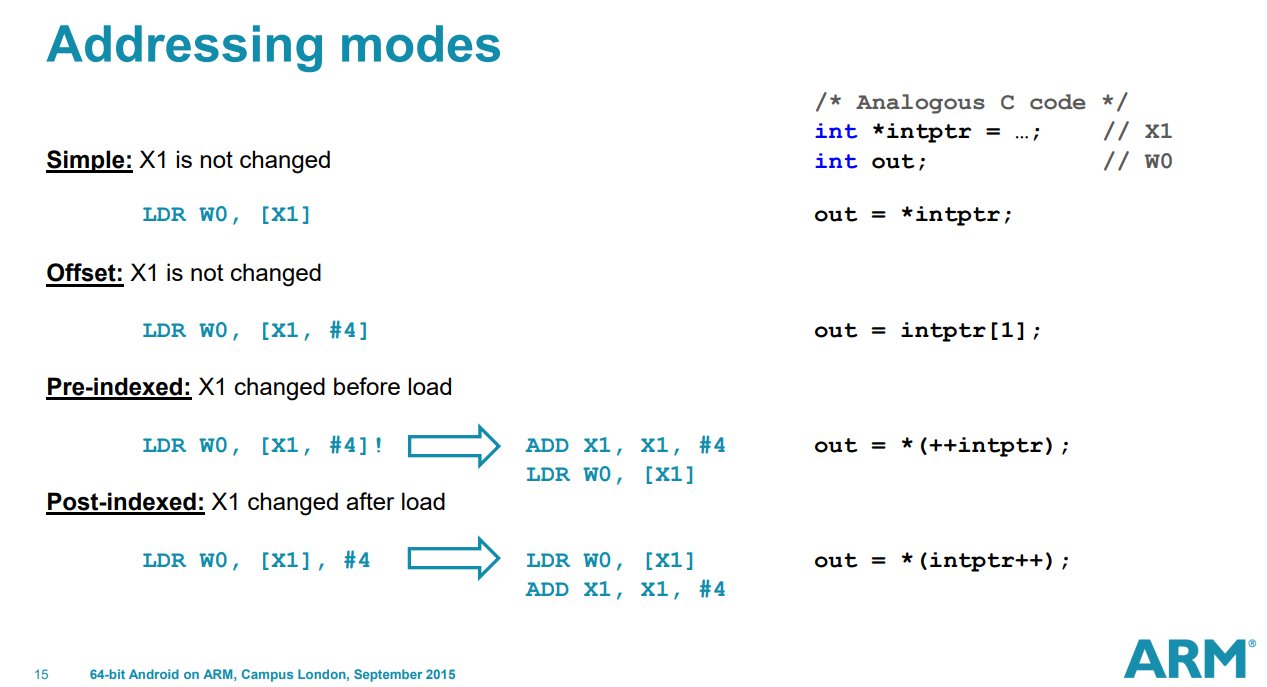
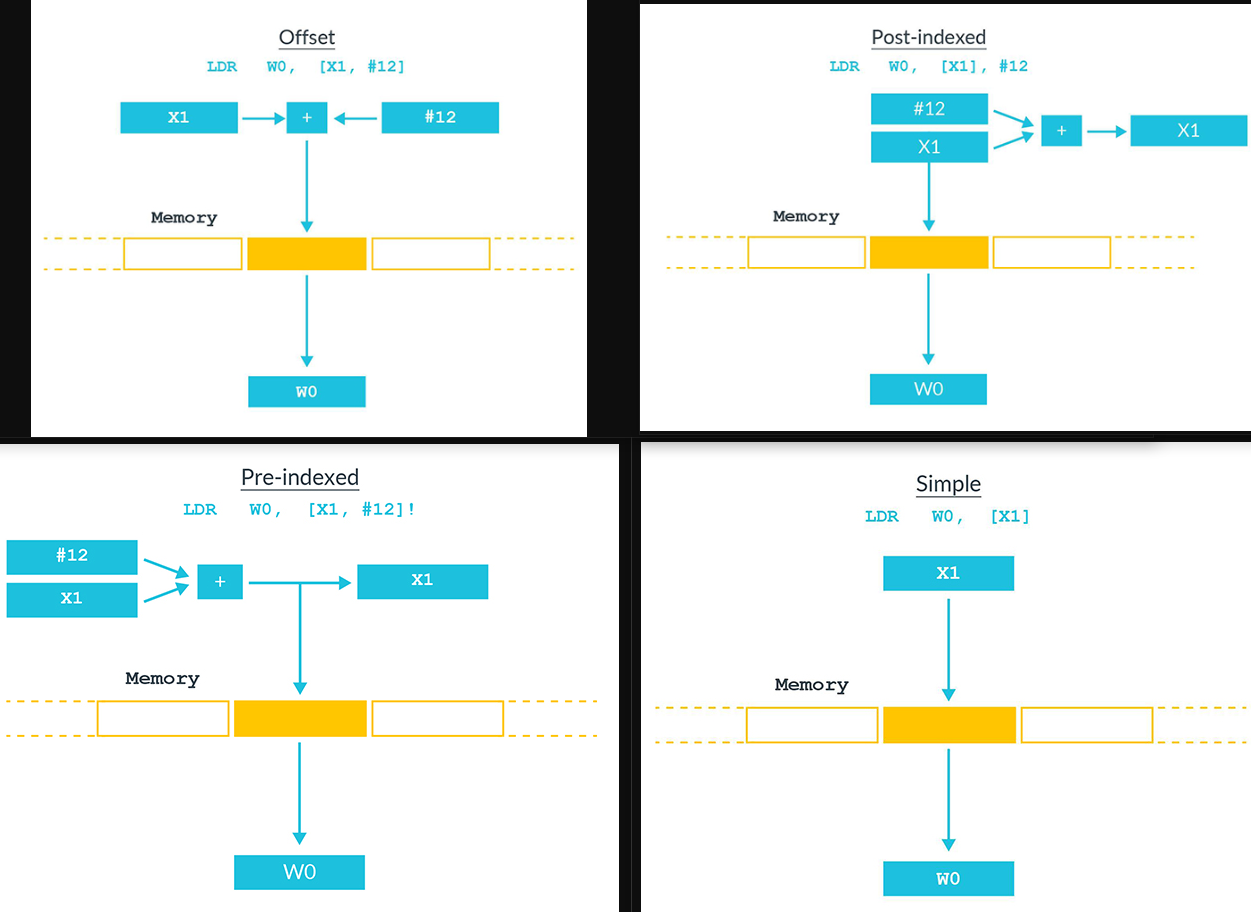
Arm A64 Instruction Set Architecture https://modexp.wordpress.com/2018/10/30/arm64-assembly/
直接阅读文档 Arm® A64 Instruction Set Architecture Armv8, for Armv8-A architecture profile最有效
read from ARMv8 Instruction Set Overview 4.2 Instruction Mnemonics
The container is one of:
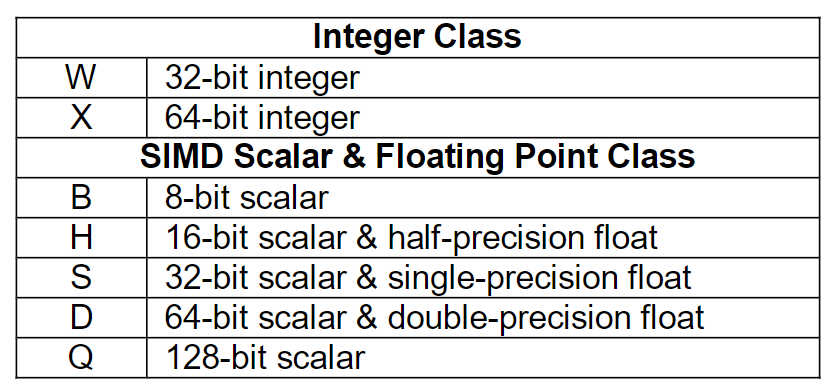
The subtype is one of:
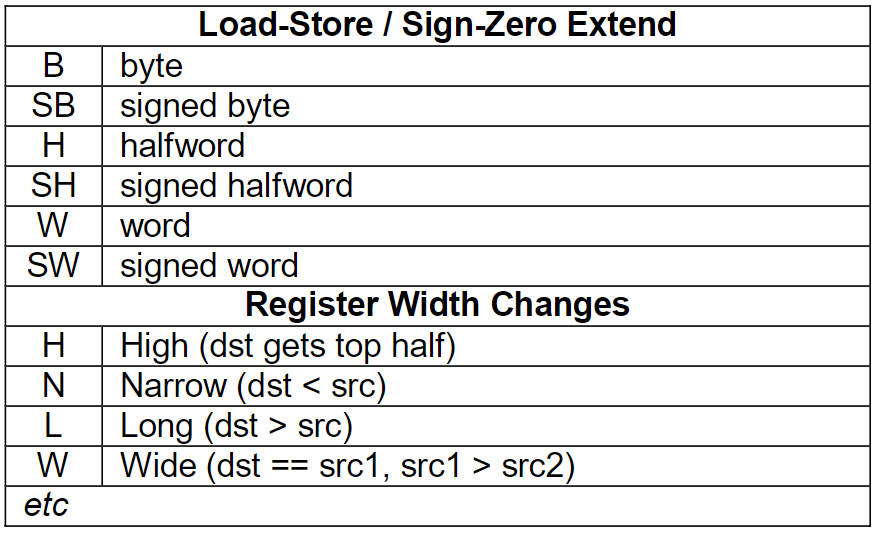
combine
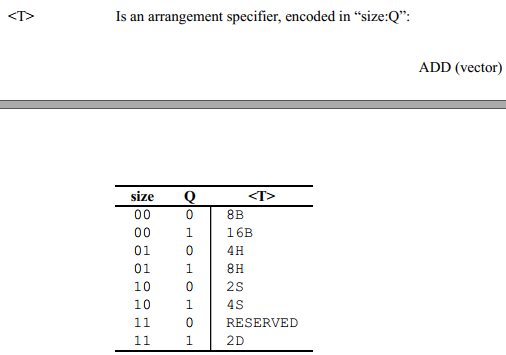
注意后缀的作用主体
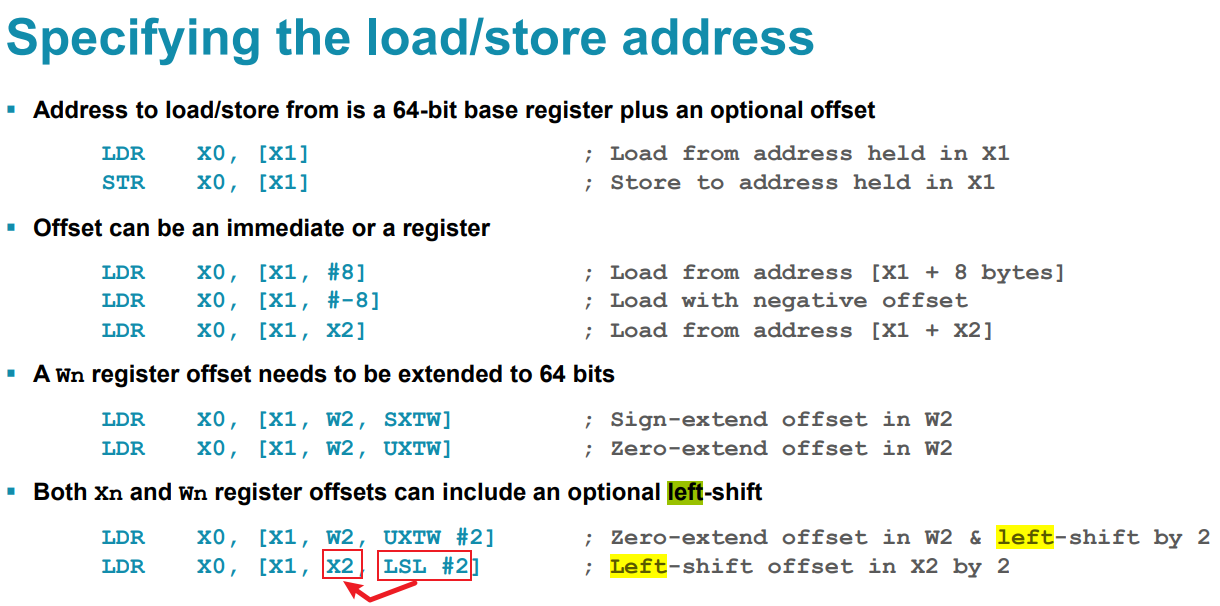
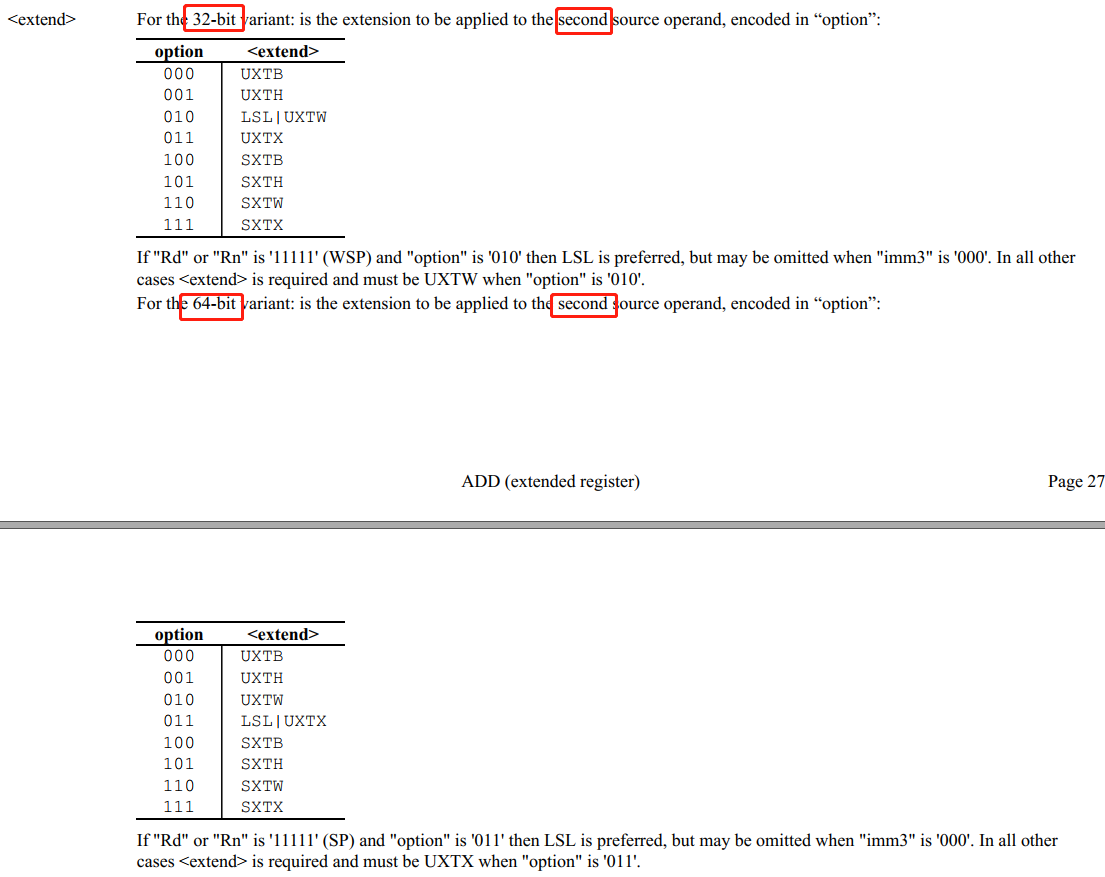
官网查找指令: https://developer.arm.com/architectures/instruction-sets/intrinsics
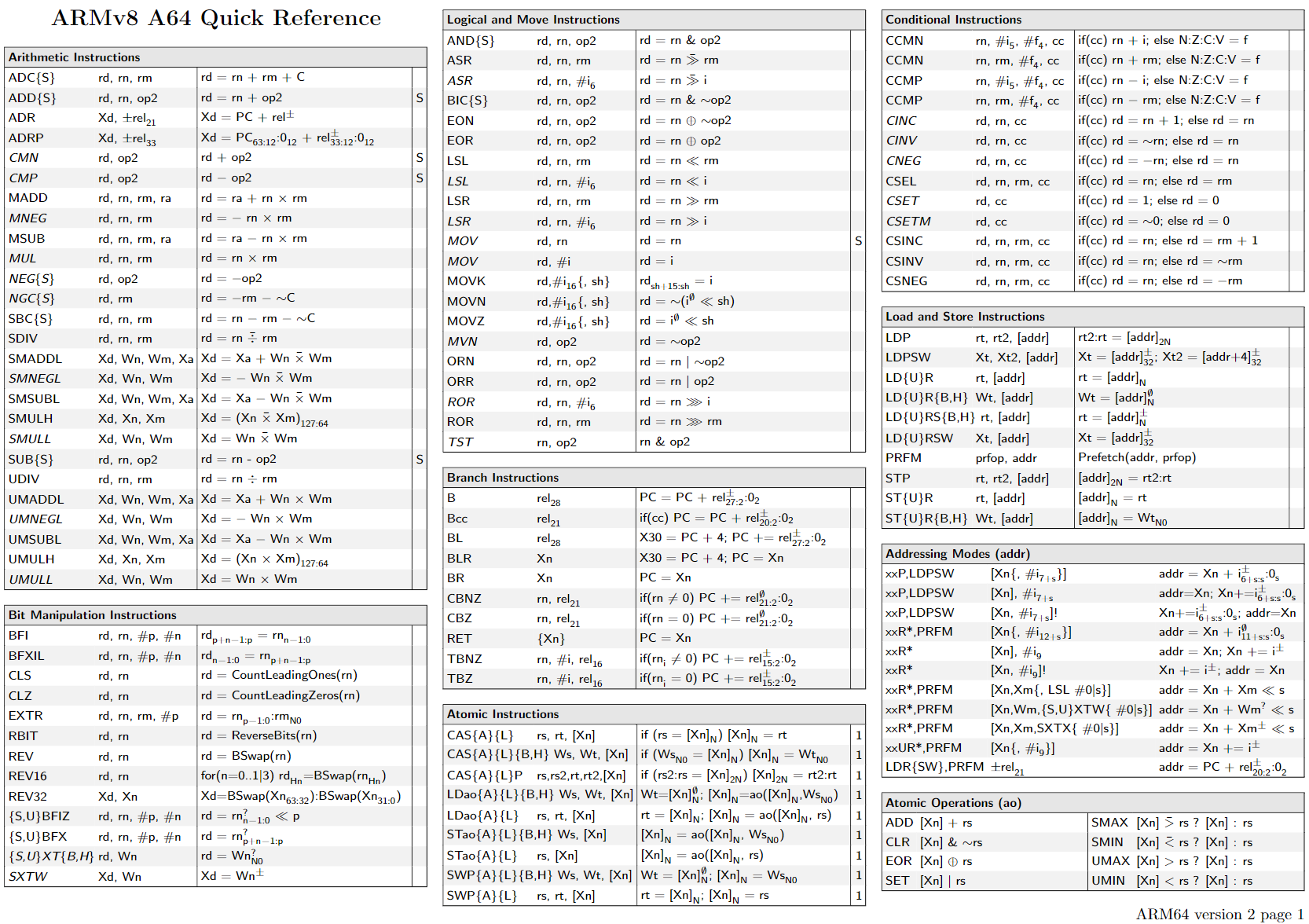
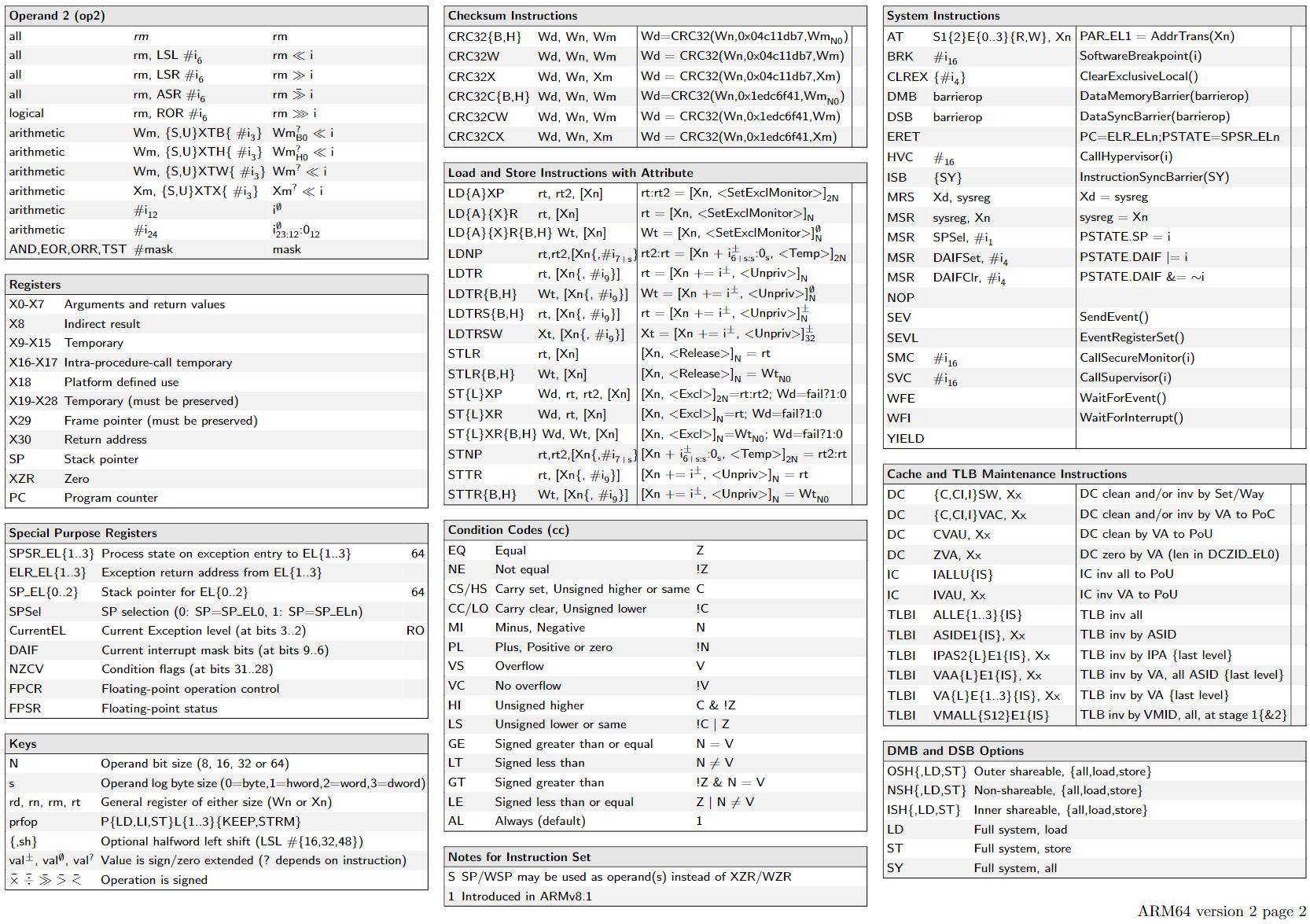
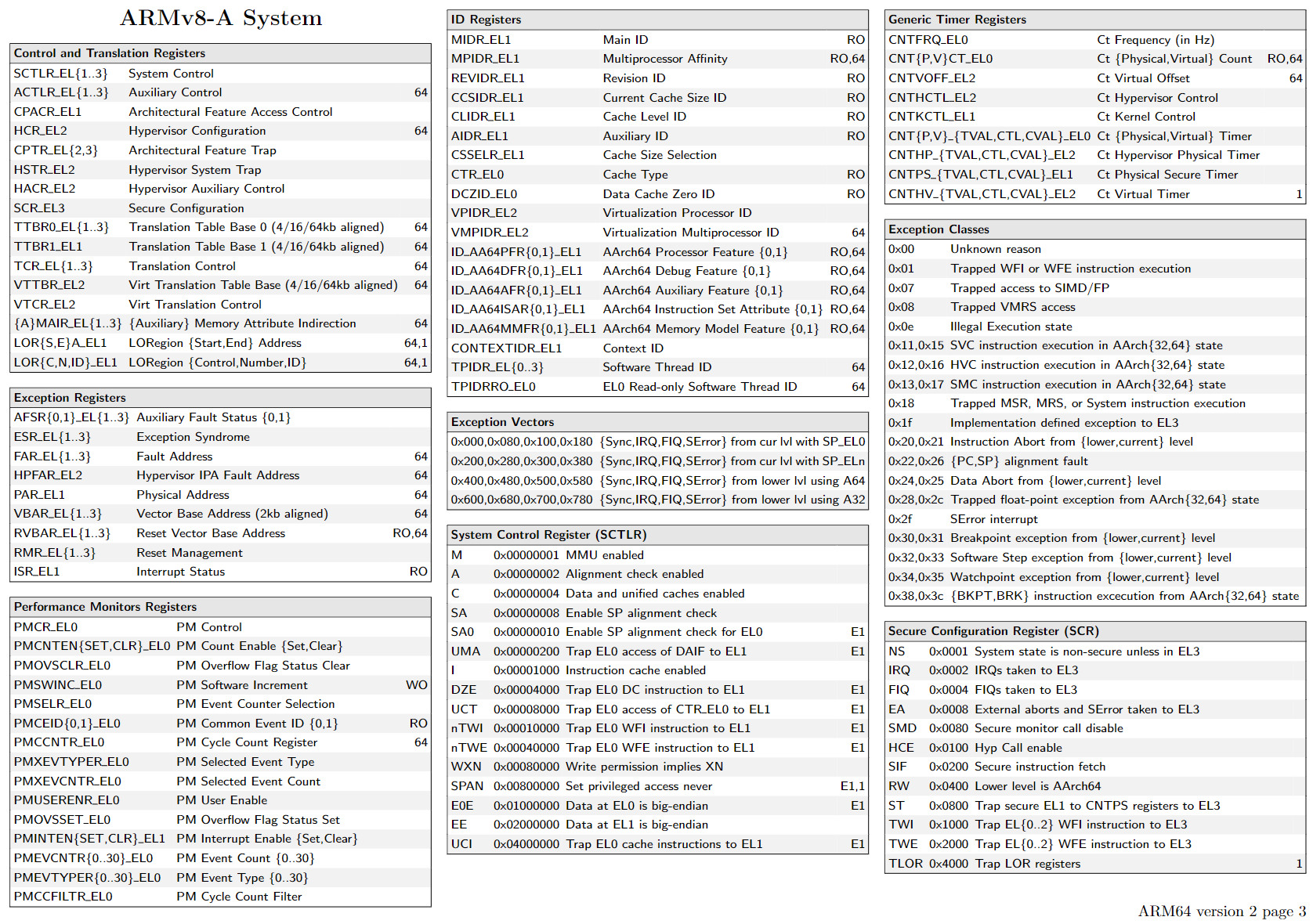
https://armconverter.com/?disasm&code=0786b04e

几乎每个指令都可以同时作用在不同寄存器和vector或者scalar上。比如add指令,并没有像X86一样设计vadd或者addps等单独 的指令,如果一定要区分,只能从寄存器是不是vector下手。
根据这个图,确实是有做向量操作的add,FADD是float-add的意思,ADDP是将相邻的寄存器相加放入目的寄存器的意思。不影响是标量scalar还是向量vector的操作。addv是将一个向量寄存器里的每个分量归约求和的意思,确实只能用在向量指令。

由于需要满足64或者128位只有下面几种情况

需要额外注意的是另外一种写法,位操作指令,不在乎寄存器形状shape
是同一个意思,但是不支持and v3.8h, v3.8h, v7.8h
DUP //Duplicate general-purpose register to vector.or Duplicate vector element to vector or scalar.
addp //Add Pair of elements (scalar). This instruction adds two vector elements in the source SIMD&FP register and writes
//the scalar result into the destination SIMD&FP register.
add
addp //Add Pair of elements (scalar). This instruction adds two vector elements in the source SIMD&FP register and writes the scalar result into the destination SIMD&FP register.
adds // Add , setting flags.
eor // Bitwise Exclusive OR
orr // Move (register) copies the value in a source register to the destination register. Alias of ORR.
b.cond // branch condition eg. b.ne
bl //Branch with Link branches to a PC-relative offset, setting the register X30 to PC+4
//带链接的跳转。 首先将当前指令的下一条指令地址保存在LR寄存器,然后跳转的lable。通常用于调用子程序,可通过在子程序的尾部添加mov pc, lr 返回。
blr //Branch with Link to Register calls a subroutine at an address in a register, setting register X30 to PC+4.
cbnz //Compare and Branch on Nonzero compares the value in a register with zero, and conditionally branches to a label at a PC-relative offset if the comparison is not equal. It provides a hint that this is not a subroutine call or return. This instruction does not affect the condition flags.
tbnz // test and branch not zero
ret //Return from subroutine, branches unconditionally to an address in a register, with a hint that this is a subroutine return.
ldrb // b是byte的意思
ldar // LDAR Load-Acquire(申请锁) Register
STLR //Store-Release(释放锁) Register
ldp // load pair(two) register
stp // store pair(two) register
ldr(b/h/sb/sh/sw) // load register , sb/sh/sw is signed byte/half/word
str // store register
ldur // load register (unscaled) unscaled means that in the machine-code, the offset will not be encoded with a scaled offset like ldr uses. or offset is minus.
prfm // prefetch memory
ccmp // comdition compare
CMEQ // Compare bitwise Equal (vector). This instruction compares each vector element from the frst source SIMD&FP register with the corresponding vector element from the second source SIMD&FP register
CSEL // If the condition is true, Conditional Select writes the value of the frst source register to the destination register. If the condition is false, it writes the value of the second source register to the destination register.
CSINC //Conditional Select Increment returns
CSINV //Conditional Select Invert returns
CSNEG //Conditional Select Negation returns
ASRV //Arithmetic Shift Right Variable
lsl //logic shift left
orr //bitwise(逐位) or
eor //Bitwise Exclusive OR
TST/ANDS //Test bits (immediate), setting the condition flags and discarding the result. Alias of ANDS.
MOVZ //Move wide with zero moves an optionally-shifted 16-bit immediate value to a register
UBFM // Unigned Bitfield Move. This instruction is used by the aliases LSL (immediate), LSR (immediate), UBFIZ, UBFX, UXTB, and UXTH
BFM //Bitfield Move
BIC (shifted register) //Bitwise Bit Clear
CLZ // Count Leading Zeros counts the number of binary zero bits before the frst binary one bit in the value of the source register, and writes the result to the destination register.
REV, REV16, REVSH, and RBIT // below
REV //Reverse byte order in a word.
REV16 //Reverse byte order in each halfword independently.
REVSH //Reverse byte order in the bottom halfword, and sign extend to 32 bits.
RBIT //Reverse the bit order in a 32-bit word.
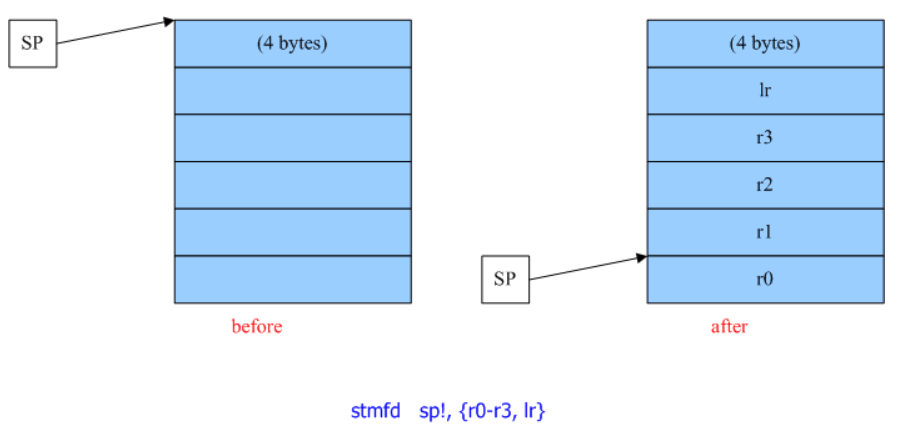
dmb //data memory barrier
SVC //The SVC instruction causes an exception. This means that the processor mode changes to Supervisor,
are aliases for
暂无
暂无
https://www.cs.virginia.edu/~evans/cs216/guides/x86.html
_mm_sin_ps intrinsic is a packed 128-bit vector of four 32-bit precision floating point numbers.The intrinsic computes the sine of each of these four numbers and returns the four results in a packed 128-bit vector.
AVX2在AVX的基础上完善了256位寄存器的一些实现
float-point multiply add/sub
include 128/256 bits regs
AVX-VNNI is a VEX-coded variant of the AVX512-VNNI instruction set extension. It provides the same set of operations, but is limited to 256-bit vectors and does not support any additional features of EVEX encoding, such as broadcasting, opmask registers or accessing more than 16 vector registers. This extension allows to support VNNI operations even when full AVX-512 support is not implemented by the processor.
dpbusd //_mm_dpbusd_avx_epi32
dpwssd // b 与 w 是 byte 和dword。 us和ss是ab两数是不是signed
dpwssds // 最后的s是 signed saturation饱和计算的意思,计算不允许越界。
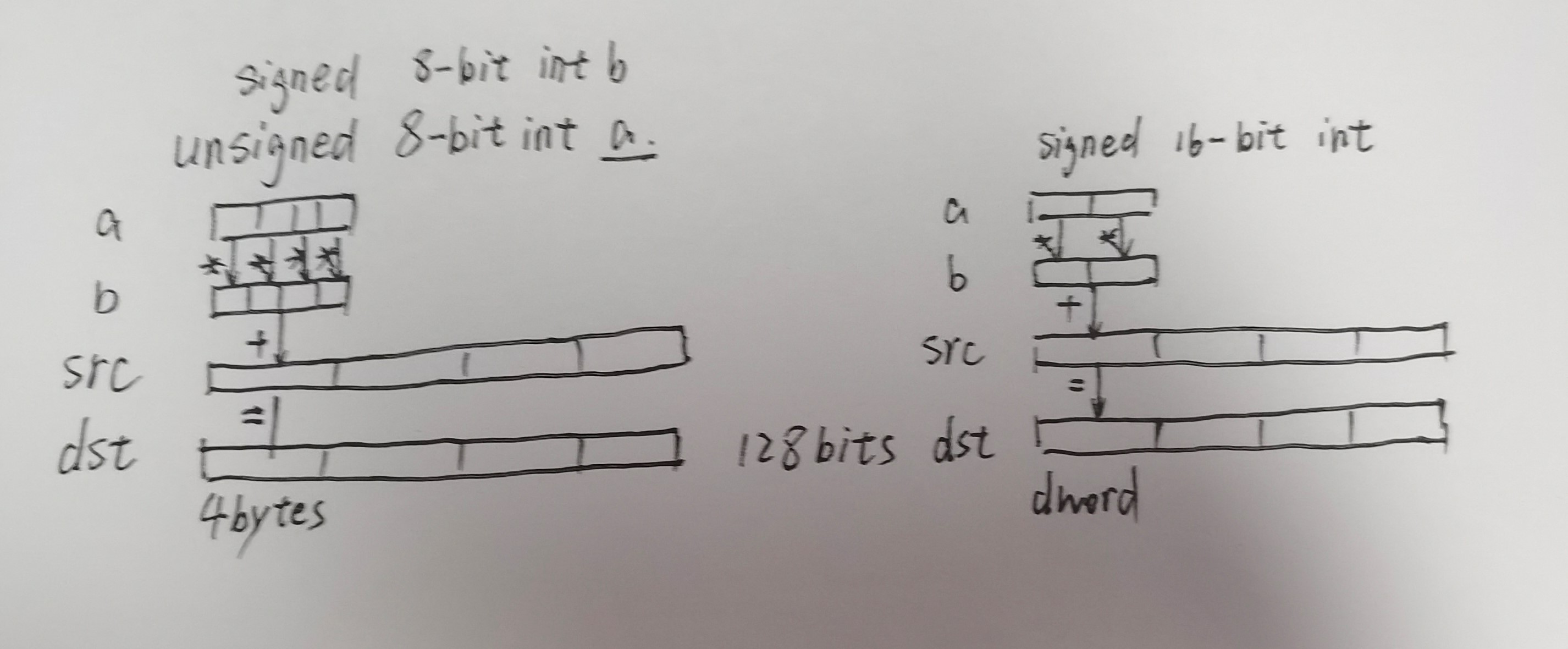
有时间再看吧
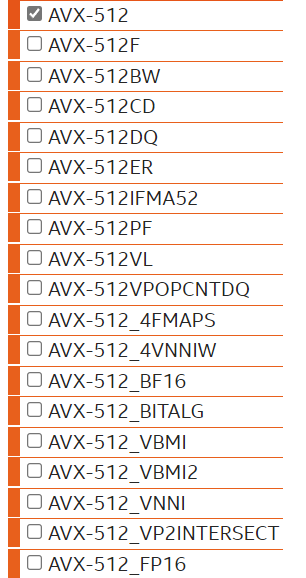
current generation of Intel Xeon Phi co-processors (codename "Knight's Corner", abbreviated KNC) supports 512-bit SIMD instruction set called "Intel® Initial Many Core Instructions" (abbreviated Intel® IMCI).
https://stackoverflow.com/questions/22670205/are-there-simdsse-avx-instructions-in-the-x86-compatible-accelerators-intel
Intel® Advanced Matrix Extensions (Intel® AMX) is a new 64-bit programming paradigm consisting of two components:
* A set of 2-dimensional registers (tiles) representing sub-arrays from a larger 2-dimensional memory image
* An accelerator that is able to operate on tiles; the first implementation of this accelerator is called TMUL (tile matrix multiply unit).

这个不适用于特殊矩阵和稀疏矩阵,这类一般先转换化简再SIMD
Short Vector Math Library Operations (SVML)
The Intel® oneAPI DPC++/C++ Compiler provides short vector math library (SVML) intrinsics to compute vector math functions. These intrinsics are available for IA-32 and Intel® 64 architectures running on supported operating systems. The prototypes for the SVML intrinsics are available in the immintrin.h file.
Using SVML intrinsics is faster than repeatedly calling the scalar math functions. However, the intrinsics differ from the scalar functions in accuracy.
暂无
暂无
The __m256 data type can hold eight 32-bit floating-point values.
The __m256d data type can hold four 64-bit double precision floating-point values.
The __m256i data type can hold thirty-two 8-bit, sixteen 16-bit, eight 32-bit, or four 64-bit integer values
__m256i _mm256_loadu_epi32 (void const* mem_addr) //读入连续的256位数据,为32位int
_mm256_lddqu_si256 //上面识别不了也可以考虑这个
__m256d _mm256_loadu_pd (double const * mem_addr) // 读入连续4个double
__m256d _mm256_broadcast_sd (double const * mem_addr) // 读取一个double,并复制4份
__m256d _mm256_i64gather_pd (double const* base_addr, __m256i vindex, const int scale) // 间隔读取
scatter // 类似间隔读取
_mm512_mask_prefetch_i32extgather_ps // 有选择预取
mask // 根据掩码选择不读,0等操作
long long int vindexList = [0,2,4,6];
__m256i vindex = __mm256_loadu_epi64(vindexList);
__m256d vj1 = __mm256_i64gather_pd(&rebuiltCoord[jj*k], vindex, 1);
__m256d _mm256_set_pd (double e3, double e2, double e1, double e0) // 设置为四个元素
__m256d _mm256_set1_pd (double a) // 设置为同一个元素
_mm256_hadd_epi16 // Horizontally add eg.dst[15:0] := a[31:16] + a[15:0]
_mm256_mulhi_epi16 // Multiply the packed signed 16-bit integers in a and b, producing intermediate 32-bit integers, and store the high 16 bits of the intermediate integers in dst.
_mm256_sign_epi16 // 根据b的值,将-a/0/a存入dst
// 乘加,乘减,的计算组合也有
static const double DP_SIGN_One = 0x7fffffffffffffff;
__m256d vDP_SIGN_Mask = _mm256_set1_pd(DP_SIGN_One);
vj1 = _mm256_and_pd(vj1, vDP_SIGN_Mask);
向量化 取反、sqrt
_mm256_blendv_pd // 根据mask结果,从a和b里选择写入dst
_mm_blend_epi32 // 寄存器内数据的移动
_mm256_permute4x64_epi64 // 寄存器高位复制到低位
VEXTRACTF128 __m128d _mm256_extractf128_pd (__m256d a, int offset); // 寄存器内数据的移动
VUNPCKHPD __m512d _mm512_unpackhi_pd( __m512d a, __m512d b); //寄存器内数据的移动
__m256d _mm256_undefined_pd (void)
__m128i low = _mm256_castsi256_si128(v); //__m256i 变 type __m128i,源向量较低的128位不变地传递给结果。这种内在的特性不会向生成的代码引入额外的操作。
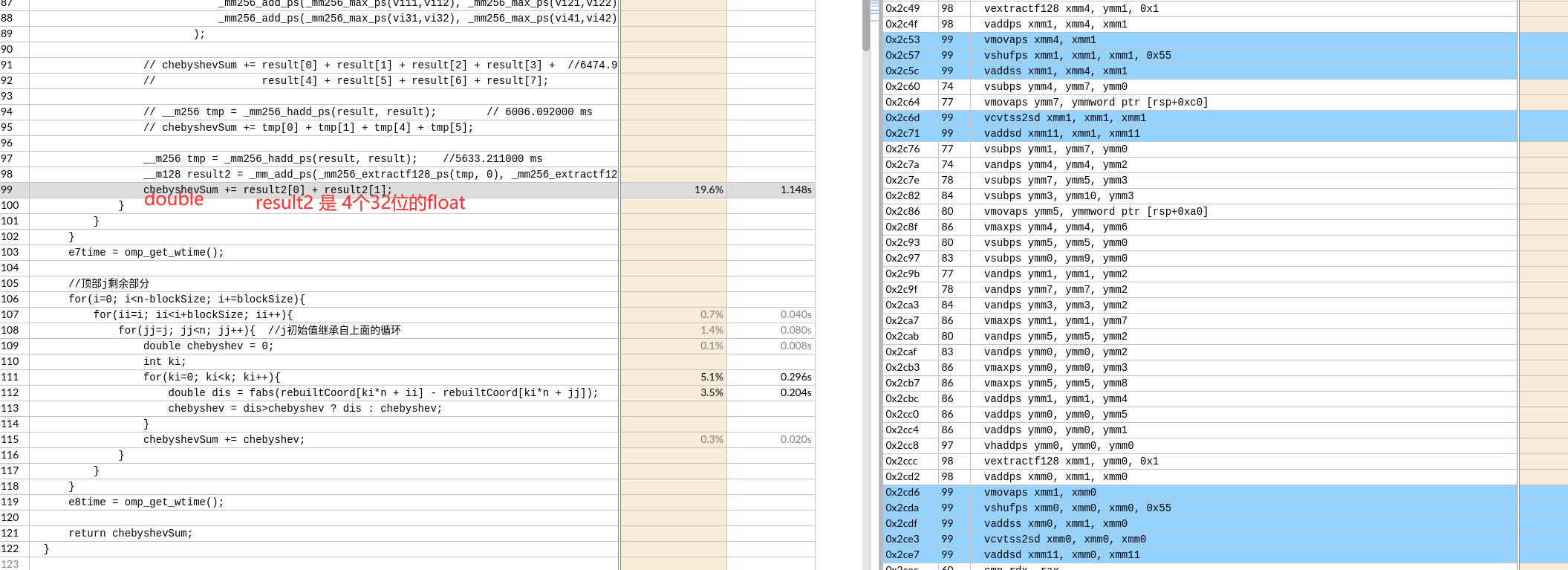
Select4(SRC, control) {
CASE (control[1:0]) OF
0: TMP ←SRC[31:0];
1: TMP ←SRC[63:32];
2: TMP ←SRC[95:64];
3: TMP ←SRC[127:96];
ESAC;
RETURN TMP
}
VSHUFPS (VEX.128 encoded version) ¶
DEST[31:0] ←Select4(SRC1[127:0], imm8[1:0]);
DEST[63:32] ←Select4(SRC1[127:0], imm8[3:2]);
DEST[95:64] ←Select4(SRC2[127:0], imm8[5:4]);
DEST[127:96]←Select4(SRC2[127:0], imm8[7:6]);
DEST[MAXVL-1:128] ←0
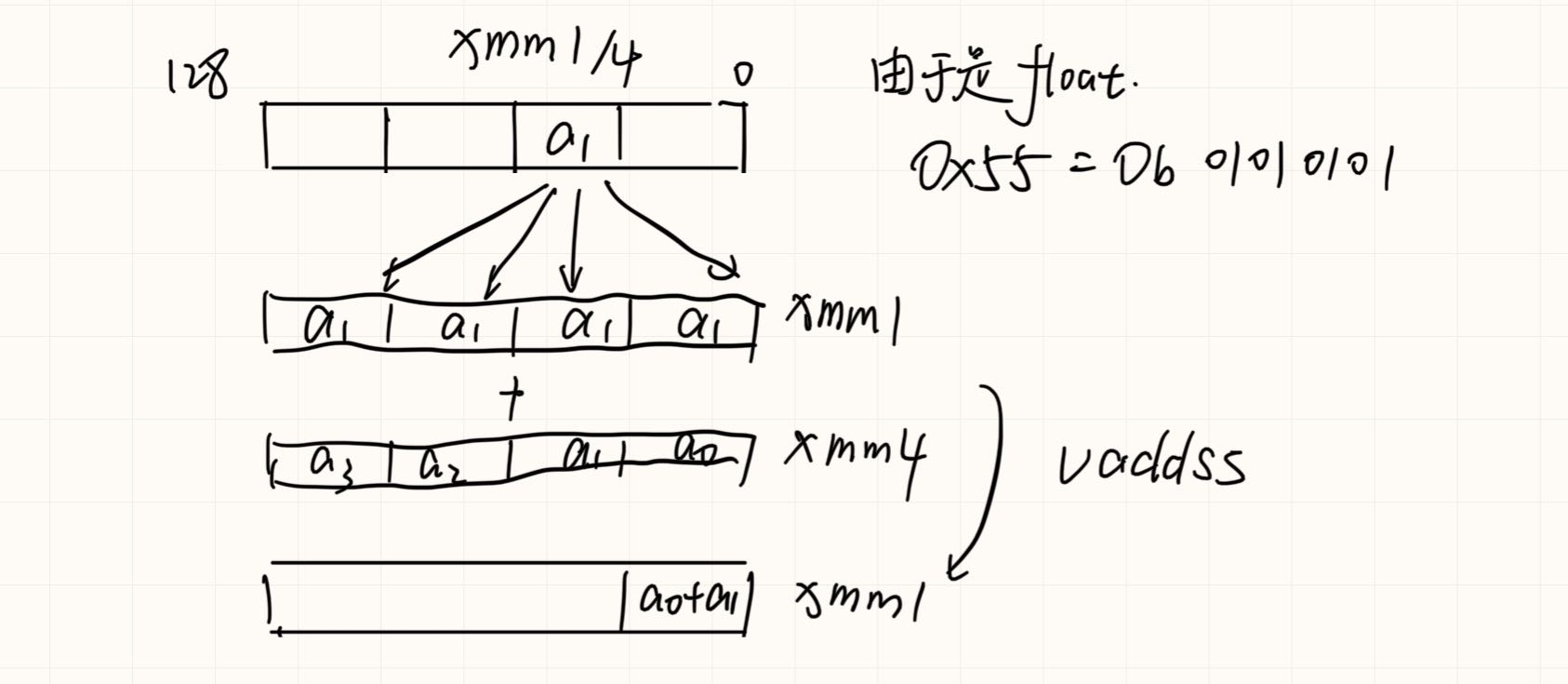 之后float类型转换为double,再求和。
之后float类型转换为double,再求和。
暂无
暂无
https://www.intel.com/content/www/us/en/docs/intrinsics-guide/index.html#text=_mm256_loadu_pd&ig_expand=4317